Following a record breaking year for electric SUVs in Australia (Tesla Model Y and BYD Atto 3 leading sales), we explore all the EV SUV options in Australia in 2024.
Australia has a love affair with SUVs and for good reason. They offer a great mix of space and practicality. Electric cars sales are taking off thanks to a plethora of government incentives, falling prices and incresed sipply. Electric SUVs dominated EV sales figures in 2023, taking the top spot (Tesla Model Y) and 7 EV SUVs featuring in the top 10 selling EV models.
If you're looking to make the transition to electric vehicles and looking for an SUV, bookmark this list of EV SUVs of Australia 2024 edition. We cover all 47 models available and coming in 2024.
For an up to date listing of all electric cars, including SUVs, visit the zecar EV database.
Audi e-tron
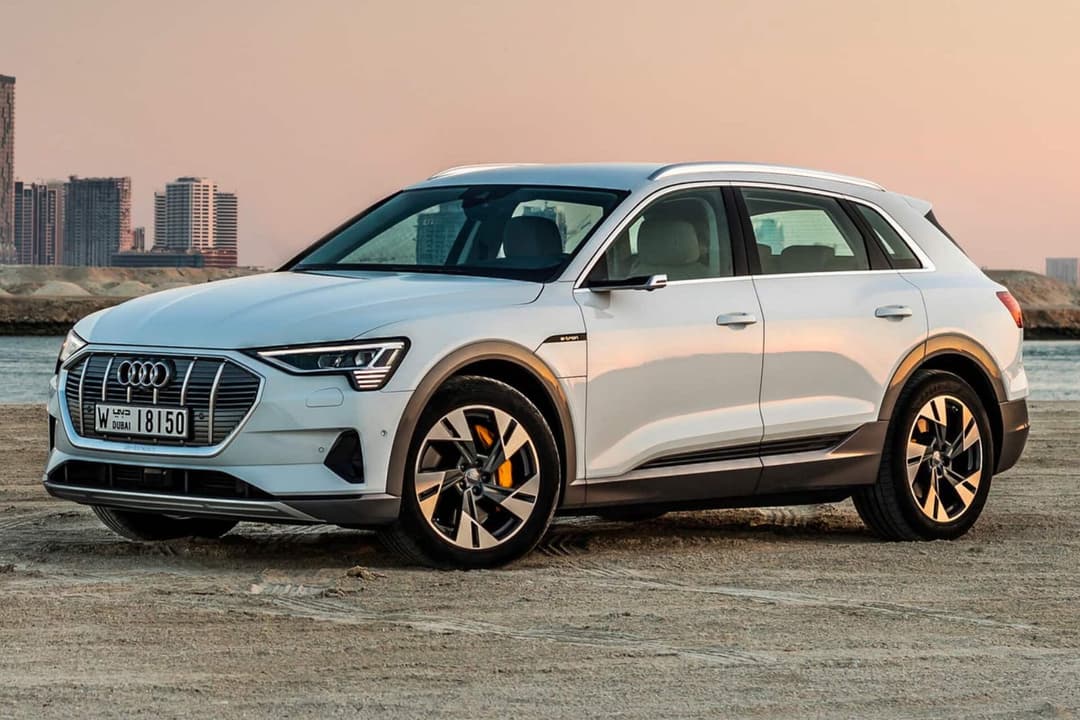
- Mid-size luxury electric SUV
- Competes with: Tesla Model X, BMW iX, Mercedes-Benz EQC
- Available Now
Available in three AWD models, the Audi e-Tron has a starting price of $137,100 before on-road costs. The Audi e-Tron is meant to compete with other luxury-oriented EVs such as the Tesla Model X Performance, BMW iX and Mercedes-Benz EQC. The base model is equipped with a 67kWh (usable) battery pack which allows the e-Tron to have a claimed WLTP driving range of 283km. However, the more expensive models of the e-Tron are equipped with a 86.5 kWh (usable) battery pack which increases the e-Tron's driving range to 369km.
The Audi e-Tron is capable of being charged with speeds of up to 11kW AC and 120kW DC for the base model (155kW DC for other models). The base model is capable of reaching 0-100 km/h in 6.8s, while the performance-oriented S55 Quattro model can reach 100km/h in 4.5s. The base model e-Tron is capable of providing a max power output of 230kW and 540Nm of torque.
The Audi e-Tron is backed by a three-year, unlimited kilometre vehicle warranty and a eight-year/160,000km battery warranty.
Audi Q4 e-Tron
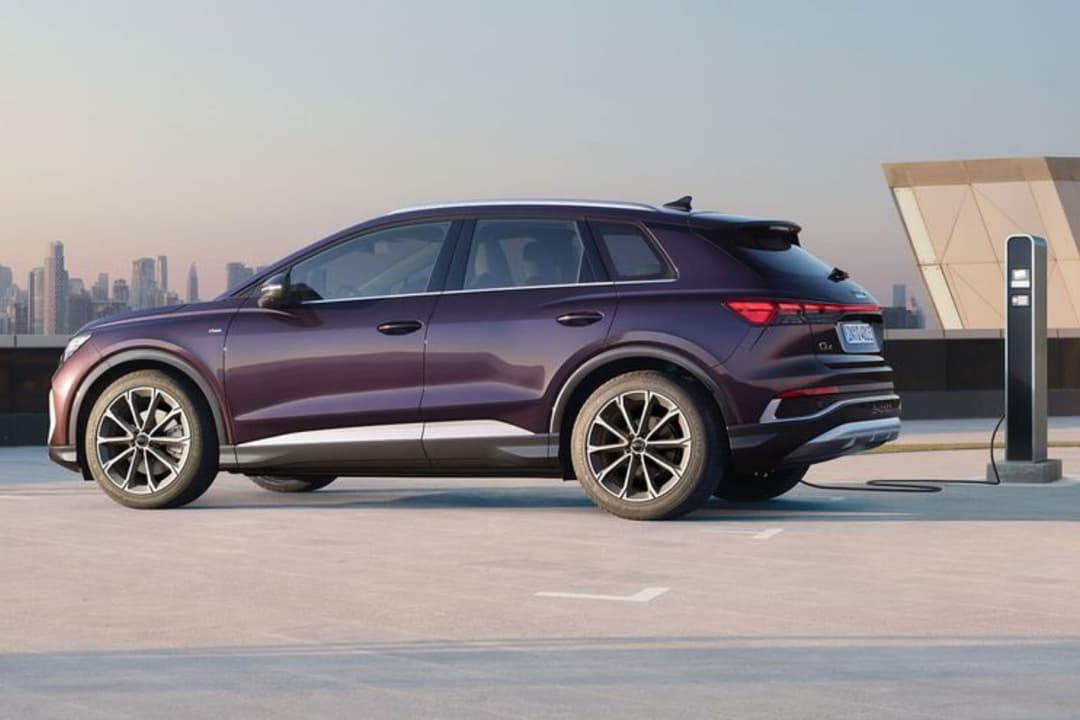
- Mid-size electric SUV
- Competes with: Tesla Model Y, Volvo XC40
- Expected in mid-2024
The Audi Q4 e-Tron is expected to enter the Australian market in the middle of 2024. This mid-size SUV is expected to have a starting price of around $88,300 before on-road costs and will compete with the likes of the Tesla Model Y and the Volvo XC40. It will be available in two models - the base model and the Sportback model.
The more efficient base model is equipped with a lithium-ion battery pack which has 77kWh net battery capacity. It has a claimed driving range of up to 526km and with its rear-wheel drive configuration is able to accelerate from 0-100 km/h in 6.7 seconds.
Audi Q8 e-Tron
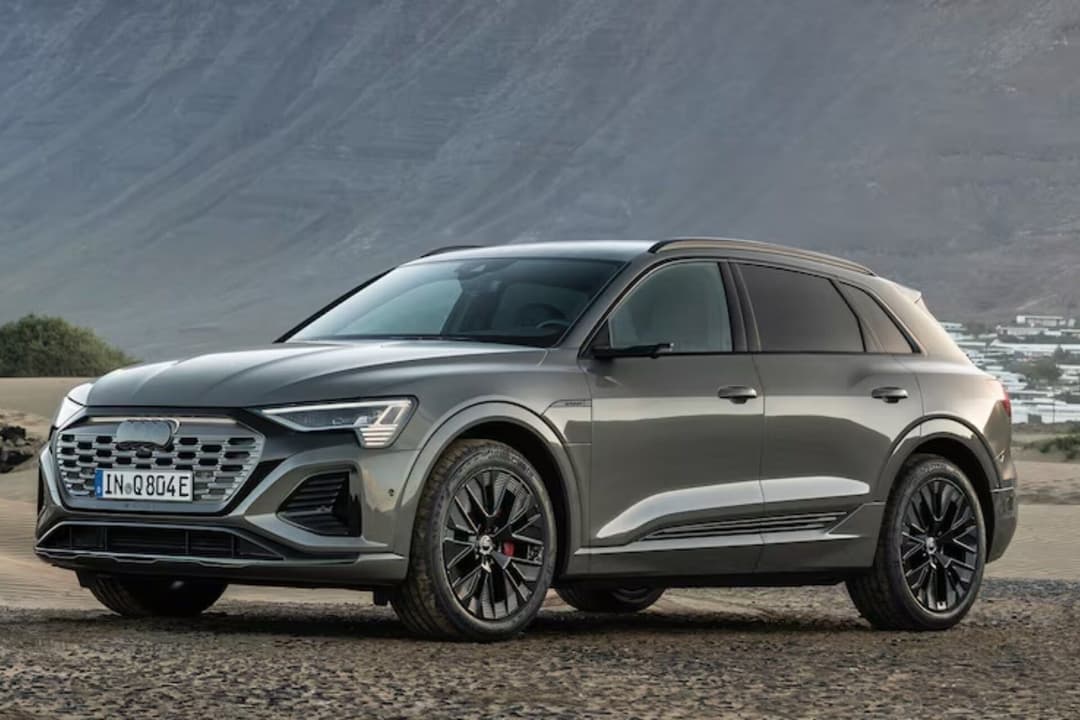
- Large electric SUV
- Competes with: Mercedes-Benz EQC, BMW iX, Genesis Electrified GV70
- Expected on the 1st half of 2024
The Audi e-Tron SUV and e-Tron Sportback will be renamed to the Q8 e-Tron and Q8 e-Tron Sportback when it receives a facelift in 2024.
The update brings aerodynamic efficiency improvements and larger batteries – 89kWh usable nickel-manganese cobalt (NMC) and 106kWh usable nickel-cobalt-aluminium (NCA) – offering between 491km to 600km of claimed WLTP range depending on the model.
Charging speeds have also been improved at up to 150kW DC on the 'small' NMC battery and 170kW DC on the larger NCA pack. The AC onboard charger remains the same at 11kW AC.
Audi SQ8 e-Tron
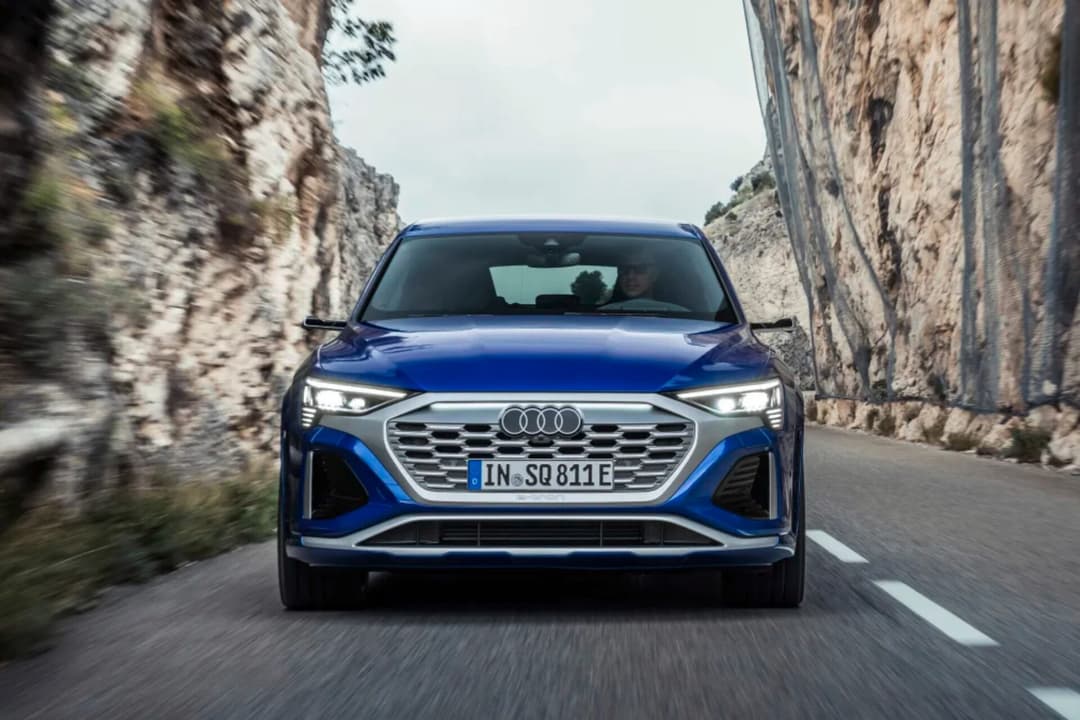
- Sporty electric SUV
- Competes with: BMW iX, Mercedes-Benz EQE
- Expected on the 1st half of 2024
The 370kW powertrain of this sporty electric SUV will allow the Audi SQ8 to accelerate from 0-100 km/h within 4.5 seconds. Based on the Q8 e-Tron, the SQ8 is meant to be the sportier version. It has a claimed driving range of around 400km, and is equipped with 106 kWh battery pack that can be charged up with a 170kW DC fast charger.
The SQ8 comes in two models - a squareback and the Sportback models. As standard features, it offers a panoramic sunroof, heated leather seats and two touchscreens at the center.
BMW iX
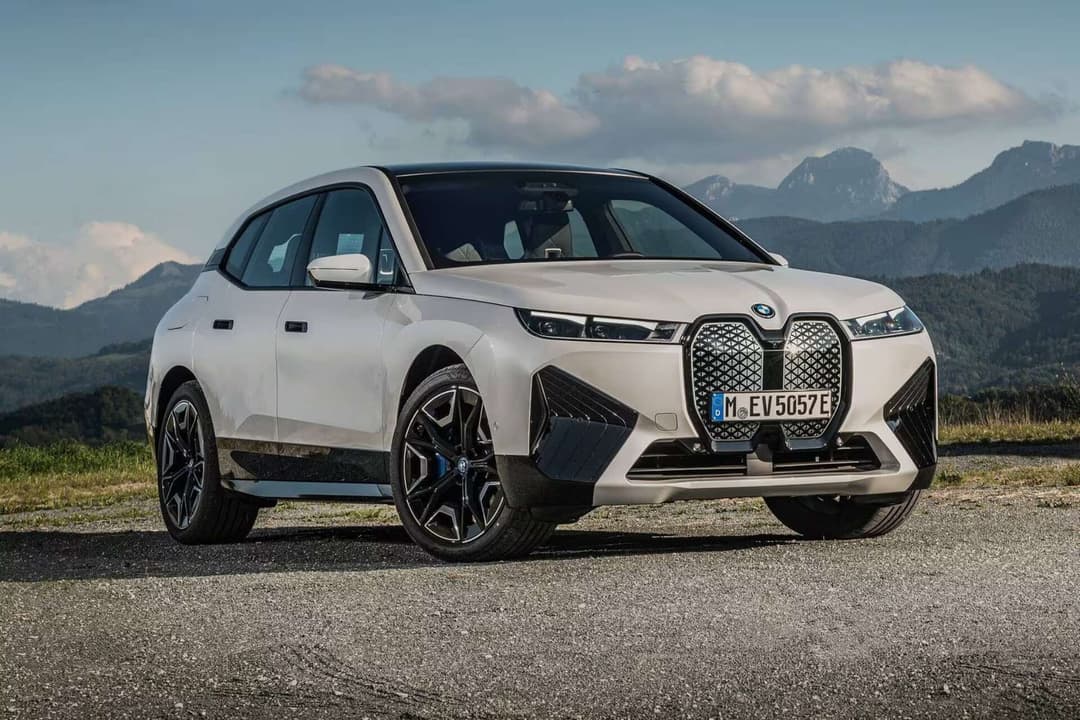
- Mid-sized luxury electric SUV
- Competes with: Tesla Model X, Jaguar I-Pace, Mercedes-Benz EQS, Audi Q8 e-Tron
- Available Now
Available in three AWD models, the BMW iX has a starting price of $134,900 before on-road costs. The BMW iX is meant to compete with the likes of the Tesla Model X Performance, Jaguar I-Pace and Porsche Macan EV. The base model is equipped with a 71kWh (usable) battery pack which allows the iX to have a claimed WLTP driving range of 425km. The more expensive models of the BMW iX are equipped with (usable) battery packs that provide 100+ kWh capacity and allows the iX to achieve a driving range of up to 630km.
The iX is capable of being charged with speeds of up to 11kW AC and 150kW DC (190kW for the M60 model). The base model is capable of reaching 0-100 km/h in 6.1s, while the M60 model can reach 100km/h in just 3.8s. Performance-wise the base model iX has inferior acceleration and top speed compared to its closest competitors - the Tesla Model X and Jaguar I-Pace. However, the BMW iX stands out with its superior comfort and driver technology features.
The iX is backed by a three-year, unlimited kilometre vehicle warranty and a eight-year/160,000km battery warranty.
BMW iX1
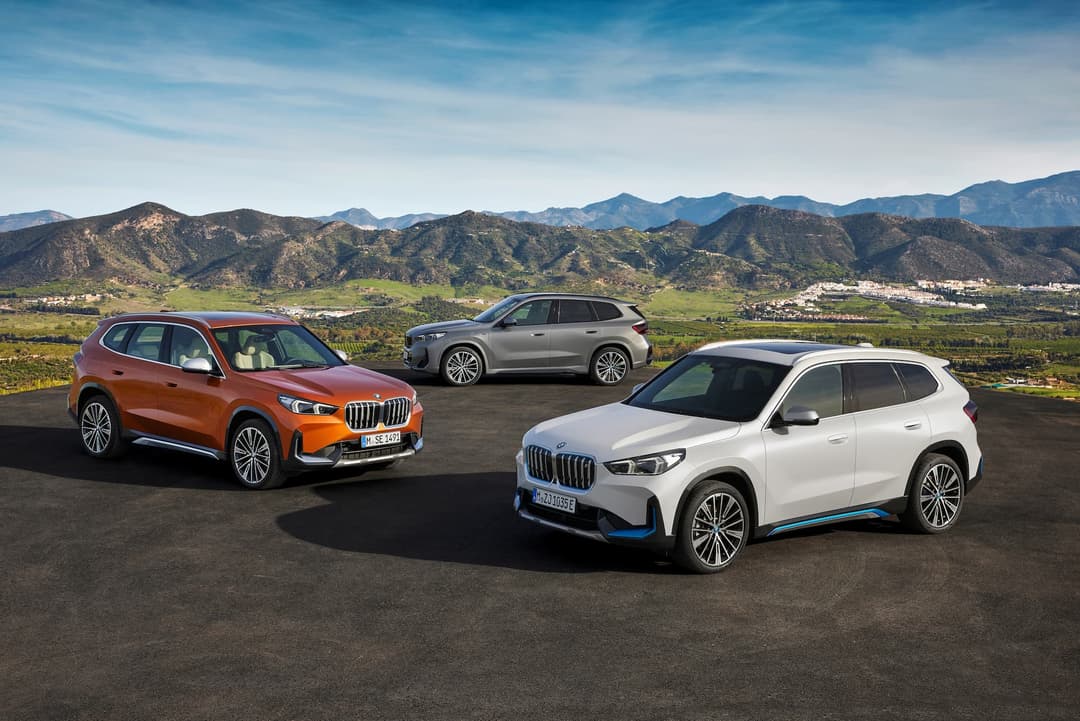
- Small electric SUV
- Competes with: Tesla Model Y, Volvo XC40, Mercedes-Benz EQA
- Expected in Q1 2024
The BMW iX1 small electric SUV is the entry point into a BMW EV.
It shares the same UKL2 combustion engine-based platform as the third-generation BMW X1, and is priced from $84,900 before on-roads with a single xDrive30 drivetrain and two trims – xLine and M Sport.
The iX1 SUV uses a 65kWh usable battery, whcih provides up to 440km of claimed WLTP range, up to 130kW DC fast charging and 11kW AC charging capabilities.
BMW iX3
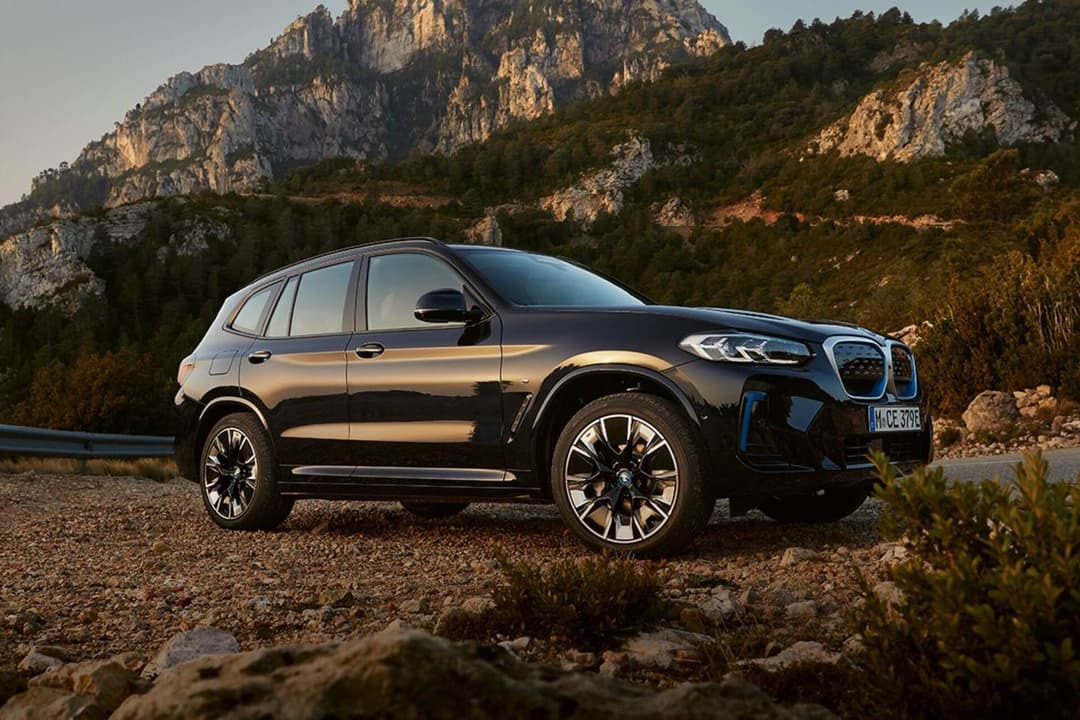
- Mid-sized luxury electric SUV
- Competes with: Tesla Model X, Volvo XC40 Recharge, Mercedes-Benz EQC
- Available Now
With a starting price of $114,900 before on-road costs, the BMW iX3 is meant to compete with other similar luxury SUVs such as the Tesla Model X and Mercedes-Benz EQC. It is equipped with a 74kWh (usable) battery pack which allows the iX3 to have a claimed WLTP driving range of 460km.
The 5-seater BMW iX3 can be charged with speeds of up to 11kW AC and 155kW DC. As with most luxury EVs, the iX3 is comfortable to drive whether on city streets or on the highway. It has a rear-wheel drive configuration, has a max output power of 210kW and 400 Nm of torque.
The iX3 is backed by a three-year, unlimited kilometre vehicle warranty and a eight-year/160,000km battery warranty.
BYD Atto 3

- Small SUV
- Competes with: Hyundai Kona EV, Kia Niro EV
- Available Now
The BYD Atto 3 is a five-seater electric small SUV made in China. Priced from $48,011 before on-road costs, it has up to 420km of claimed driving range, two battery pack sizes, and is front-wheel drive.
The electric car can be charged at up to 7kW AC/80kW DC (depending on the variant) using a Type 2/CCS2 port.
It is offered in two variants featuring a 12.8-inch rotating infotainment display, active safety assistance systems, PM2.5 air cabin filter, and more as standard.
The Atto 3 is covered by a six-year/150,000km vehicle warranty (with specific parts exclusions) and eight-year/160,000km battery warranty.
BYD Seal U
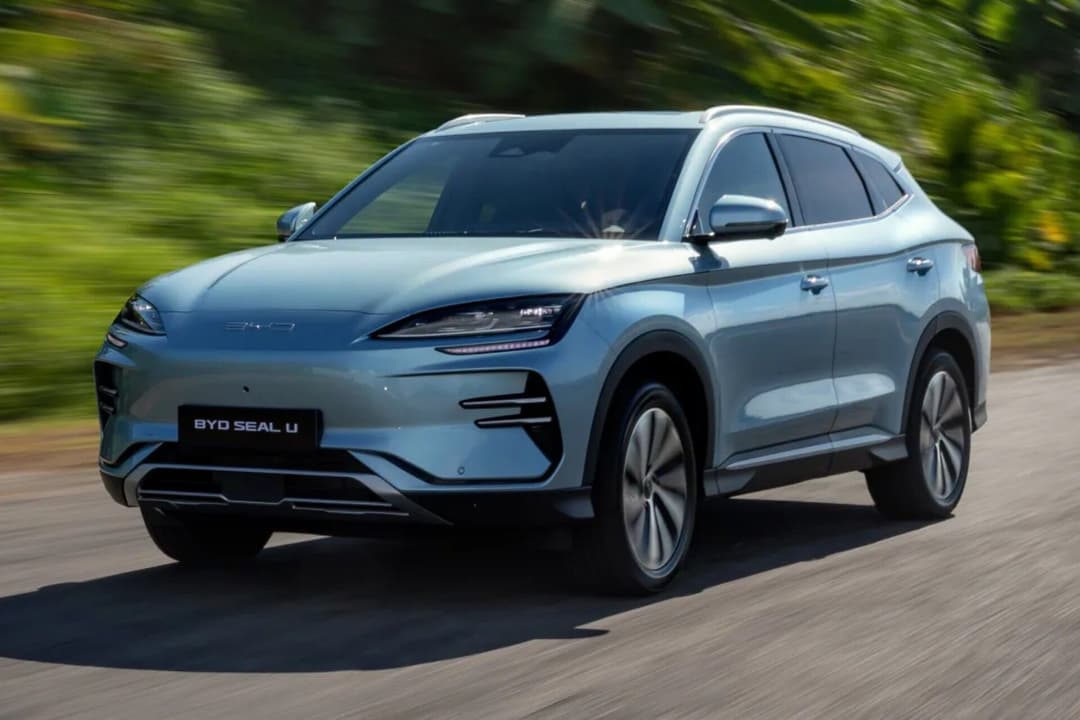
- Mid-size SUV
- Competes with: Tesla Model Y, Volvo XC40
- Expected in March/April 2024
The BYD Seal U electric SUV, known as the BYD Song Plus in China, is slated to launch in Australia in 2024, positioning itself as a direct competitor to the renowned Tesla Model Y. It will be the second electric SUV model from BYD, having introduced the Atto 3 compact electric SUV in 2022
The Seal U will be built on BYD's dedicated EV platform, e-Platform 3.0, similar to the Seal sedan. Two European versions are anticipated: the Comfort model with a 72kWh battery and the Design model with an 87kWh battery. The Seal U's dimensions closely match those of the Tesla Model Y, making it a formidable contender in the electric SUV market.
Pricing has yet to be confirmed, but it is expected to undercut the Tesla Model Y, similar to how the BYD Seal has undercut the Tesla Model 3.
Chery Omoda 5 EV
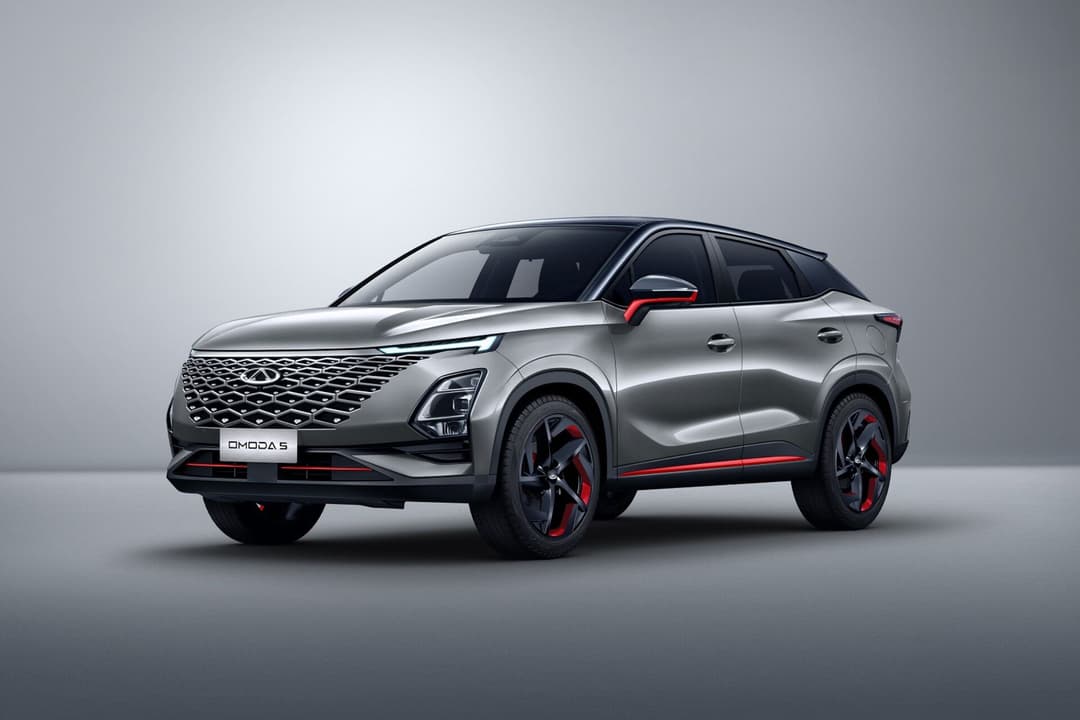
- Compact crossover SUV
- Competes with: BYD Atto 3, Hyundai Kona, Kia Niro EV
- Expected on the 2nd half of 2024
In 2024 this all-electric vehicle will be joining its petrol-powered version in the Australian market, which was introduced this year. Details on its pricing are yet to be released but it will be competing with the likes of the BYD Atto 3, Hyundai Kona and Kia Niro which fall in the $50,000-$70,000 price range.
Equipped with a 61kWh battery, it is expected to have a driving range of around 450 kilometers. It is expected to have a single motor, front-drive configuration with a power output of around 150kW and 400Nm of torque. Similar to its petrol-powered version, the Omoda 5 EV is expected to come with a plethora of features and driver-assist technology.
Ford Mustang Mach-E
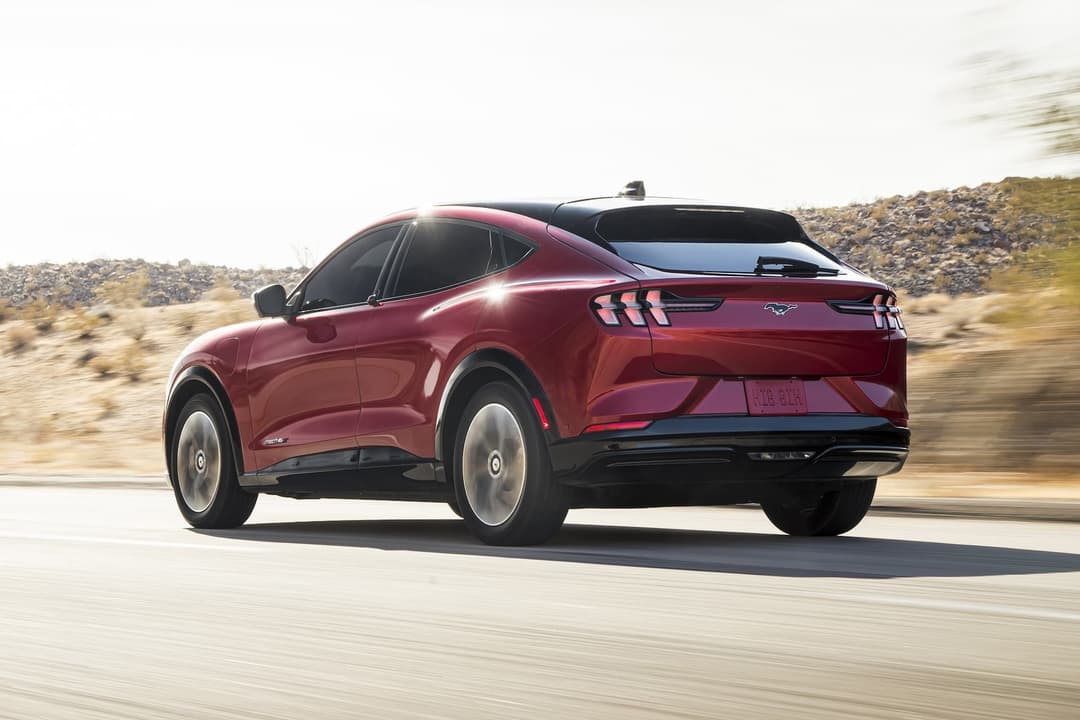
- Compact crossover SUV
- Competes with: Tesla Model Y, Kia EV6, Hyundai Ioniq 5
The Mustang Mach-E will be the second pure-electric vehicle in Ford’s Australian line-up following the E-Transit large commercial van – using the iconic pony muscle car badge, although it doesn't share any parts with the Mustang coupe and convertible besides the logo.
Available in three models, the Mustang Mach-E has a starting price of $72,990 before on-road costs. The base model has a claimed WLTP driving range of 470km from its 71kWh (usable) battery pack with an option for a longer 91kWh usable battery range with the more expensive models. The base model has a max power output of 198kW and 430Nm of torque which allows the Mach-E to accelerate from 0-100km/h in 6.9s. For an additional $29,000 from the base model, the Mach-E is equipped with powerful dual motors together with the larger battery pack. The dual-motor Mach-E is able to output 358kW of power and 860Nm of torque, allowing it to reach 0-100 km in 3.7s.
Key features include a 15.5-inch vertical-orientated touchscreen running the company’s latest Sync 4A operating system, a FordPass connectivity with a smartphone app, 19-inch alloy wheels, a fixed panoramic glass roof, and handy Type 2 to Type 2 portable charging cable.
Ford Puma EV
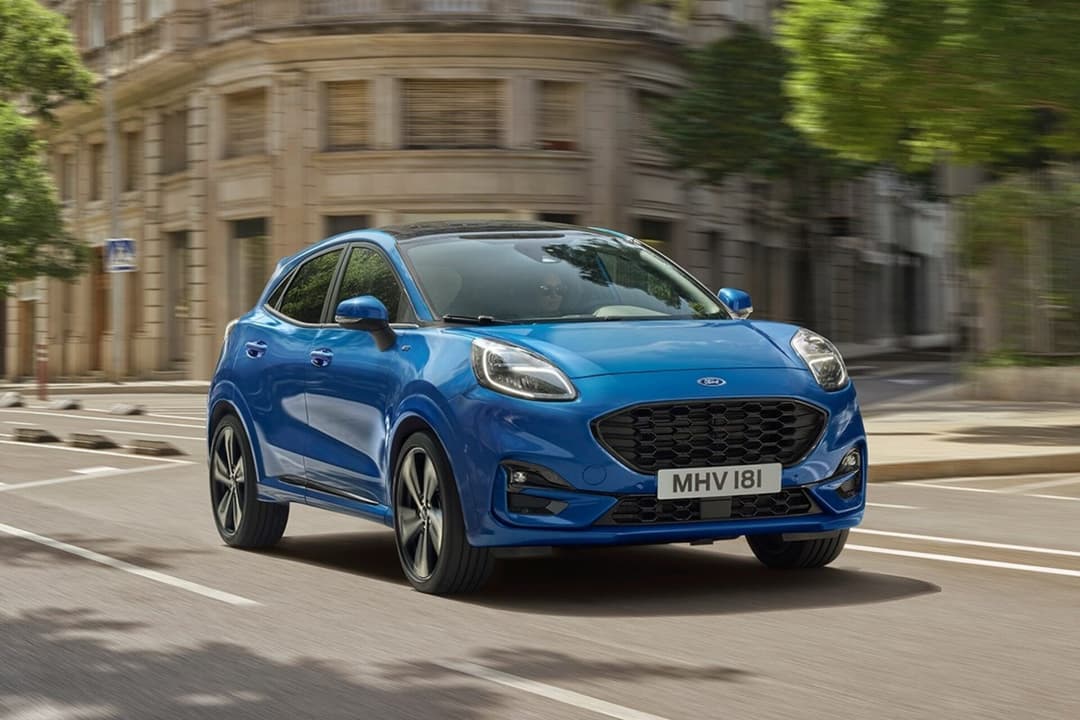
- Small electric SUV
- Competes with: MG ZS, Hyundai Kona
- Expected on the 2nd half of 2024
The Puma EV is Ford's way of entering the small all-electric SUV market and it is set to compete with the MG ZS and Hyundai Kona. Similar to its closest competitors, the Puma EV is expected to have a starting price of below A$60,000. In terms of design the Puma EV will be visually very similar to the petrol-powered version.
It is estimated to have a claimed driving range of around 400km, which will be more than its closest competitors, (only 305-320 km for the base models) the MG ZS and Hyundai Kona. Ford has opted to build the Puma EV on the same platform being used for the e-Transit, which is a platform that utilizes a 100kW drive unit.
Genesis GV60
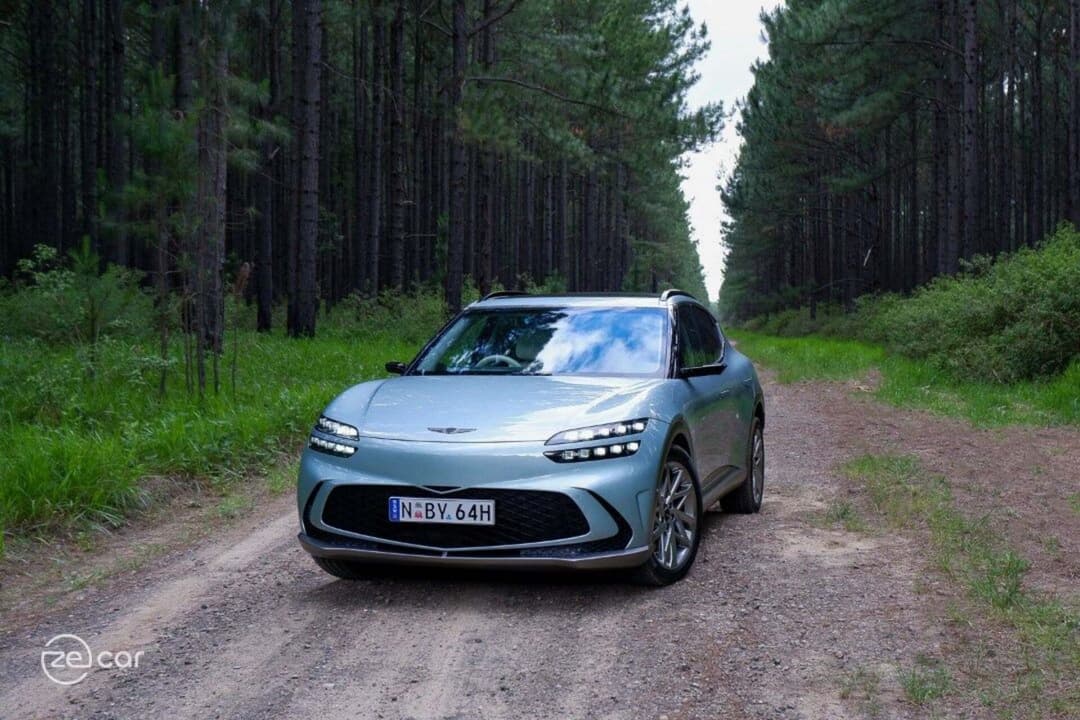
- Compact luxury electric SUV
- Competes with: Hyundai Ioniq 5, Kia EV6, Mercedes-Benz EQA
Genesis is taking a different approach with its first bespoke electric vehicle.
The Genesis GV60 is the fun, youthful and upmarket version of its related futuristic-looking Hyundai Ioniq 5 and slick Kia EV6 siblings – with added free charging and servicing perks.
Available in two all-wheel drive models, the GV60 is equipped with a 74kWh usable battery pack that is able to charge at up to 10.5kW AC and 350kW DC. The base model has a starting price of $103,700 and a claimed WLTP driving range of 470km.
The GV60 uses two electric motors which provide a total power output of 234kW and 605Nm of torque, allowing it to accelerate from 0-100km/h in 5.5 seconds.
It is backed by a five-year, unlimited kilometer vehicle warranty and eight-year battery warranty. The brand bundles free servicing for the first five visits for new owners and offers a valet service to pick up and drop off your vehicle.
➡️MORE: 2023 Genesis GV60 review
Genesis Electrified GV70
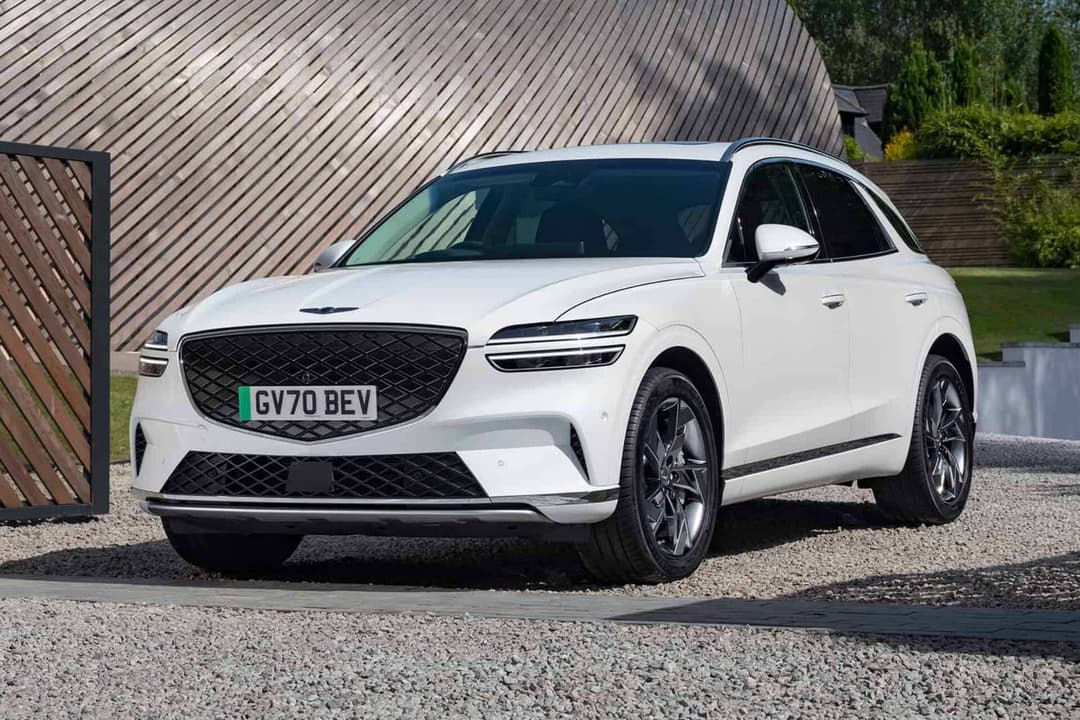
- Small luxury electric SUV
- Competes with: Mercedes-Benz EQC, BMW iX3, Audi Q8 e-Tron
The Genesis Electrified GV70 slots in between the GV60 crossover and Electrified G80 sedan. It contends in one of Australia’s most popular car segments with the Mercedes-Benz EQC, BMW iX3 and Audi Q8 e-Tron, plus the larger BMW iX and upcoming Porsche Macan EV all vying in the premium electric SUV space.
The Electrified GV70 is sold in a single flagship Performance AWD with Luxury Package variant in Australia. It has a claimed WLTP driving range of 455km and is priced from $127,800 before on-road costs which includes the luxury car tax.
Similar to the Genesis GV60, the GV70 is equipped with a 74kWh usable battery pack that is able to charge up to 10.5kW AC and 350kW DC speeds. The GV70 packs dual electric motors making a whopping 360kW of power and 700Nm of torque combined when boost mode is activated (320kW/605Nm without). The 2.3-tonne EV accelerates from 0-100km/h in a claimed 4.2 seconds in boost.
It lives up to the luxury badge with a comfortable suspension tune which primes itself before hitting a road bump or pothole and suppressed outside noises thanks in part to the active noise cancellation array, but doesn’t completely block out sounds like you’d expect from wireless earbuds.
Included is a five-year, unlimited kilometre vehicle warranty and an eight-year battery warranty, with five-years of free servicing for new owners.
Hyundai Ioniq 5

- Medium SUV
- Competes with: Tesla Model Y, Kia EV6, Ford Mustang Mach-E
- Available Now
The Hyundai Ioniq 5 is a five-seater electric medium crossover made in South Korea. Priced from $64,500 before on-road costs, it has up to 481km of claimed driving range, one battery pack size, and is available in rear-wheel or all-wheel drive.
The electric car can be charged at up to 11kW AC/233kW DC using a Type 2/CCS2 port.
It is offered in two variants featuring a 12.3-inch infotainment display, active safety assistance systems, an electric tailgate, and more as standard.
The Ioniq 5 is covered by a five-year, unlimited kilometre vehicle warranty and an eight-year/160,000km battery warranty.
Hyundai Kona EV
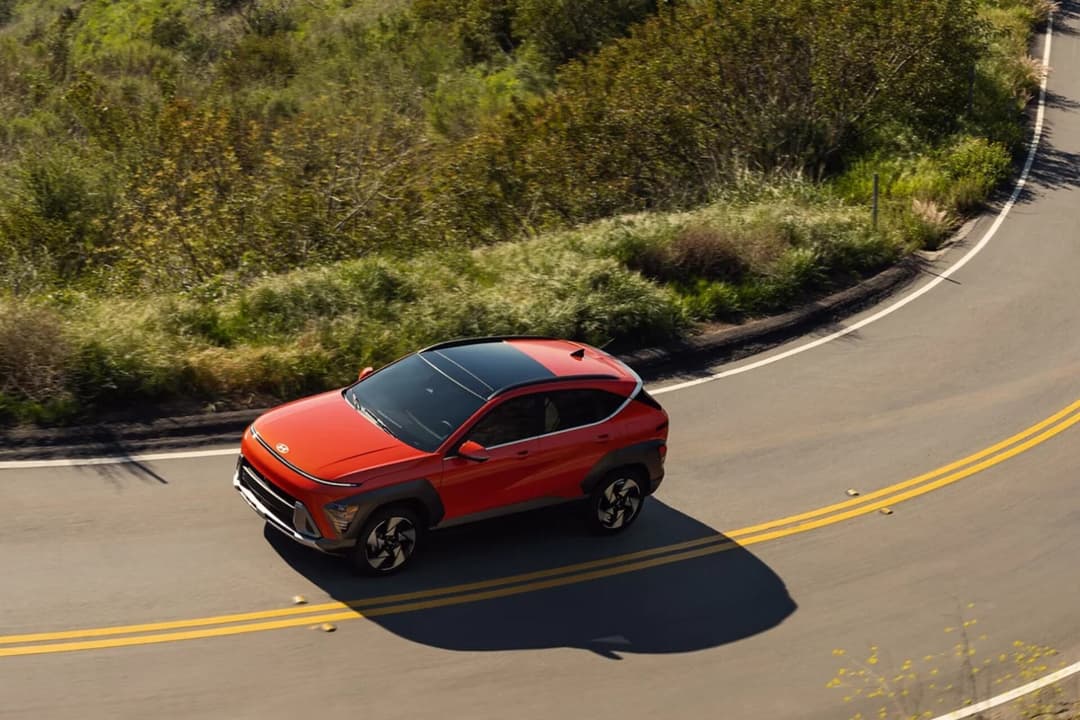
- Small electric SUV
- Competes with: Kia Niro EV, BYD Atto 3, MG ZS EV
- Expected in early 2024
The second-generation Hyundai Kona Electric will be launched at the end of this year alongside a petrol-hybrid variant.
Local pricing and features have yet-to-be-confirmed, but both the small 48.4kWh and larger 65.4kWh battery packs are on the cards – the latter likely to be priced closely to the second-generation Kia Niro EV, which starts from $65,300 plus on-road costs.
Overseas, the all-new Kona standard range is rated for 342km of claimed WLTP range, while the extended range offers 490km. According to EV Database, charging capabilities differ too – 75kW DC and 7.2kW AC on the small battery or 100kW DC and 11kW AC on the larger battery.
2022 Hyundai Kona Electric Extended Range reviewHyundai Ioniq 7
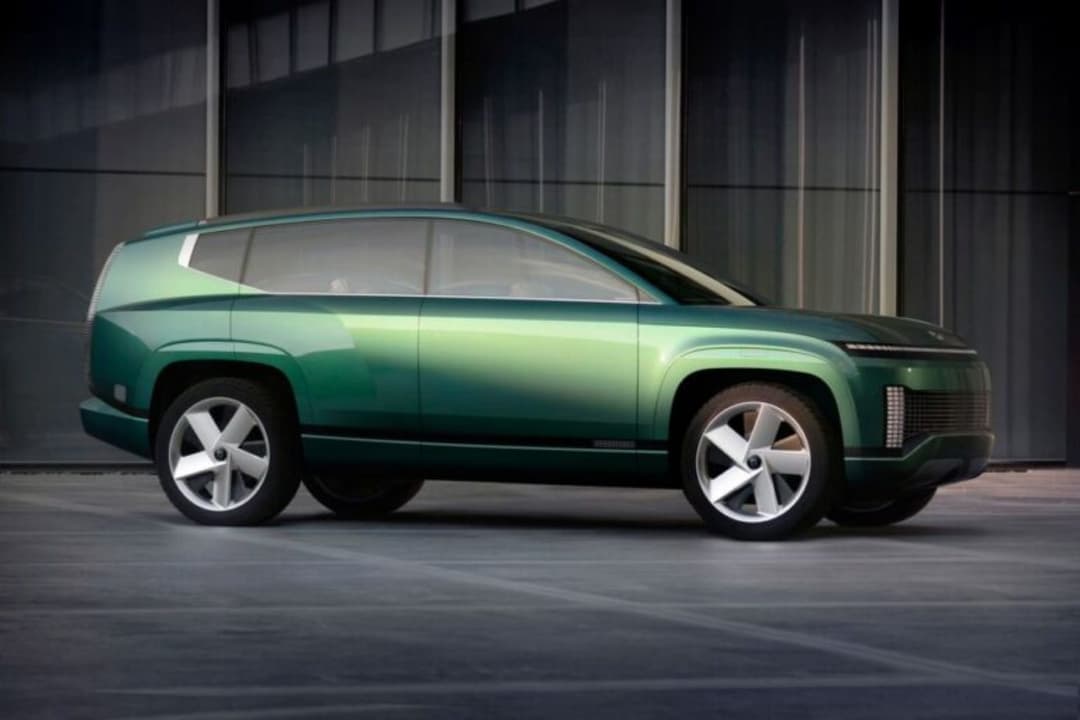
- Large electric SUV
- Competes with: Kia EV 9
- Expected on the 2nd half of 2024
As of now, details for the Hyundai Ioniq 7 have been scarce and is probably comparable to being a concept car. What is certain is that it will be large electric SUV with 3 rows of seats. It is estimated to have a starting price similar to its closest competitor, the Kia EV9. For reference, the 2024 Kia EV9 is expected to have a starting price of $97,000 before on-road costs.
As for the Ioniq 7's range, it is again expected to be quite similar to the Kia EV9 which has 400-500 kilometers of range, depending on the variant. Despite being tight-lipped about the Ioniq 7's details, Hyundai has stated that it will have fast charging capabilities - charging from from 10-80 percent within 20 minutes.
Jaguar I-Pace EV400
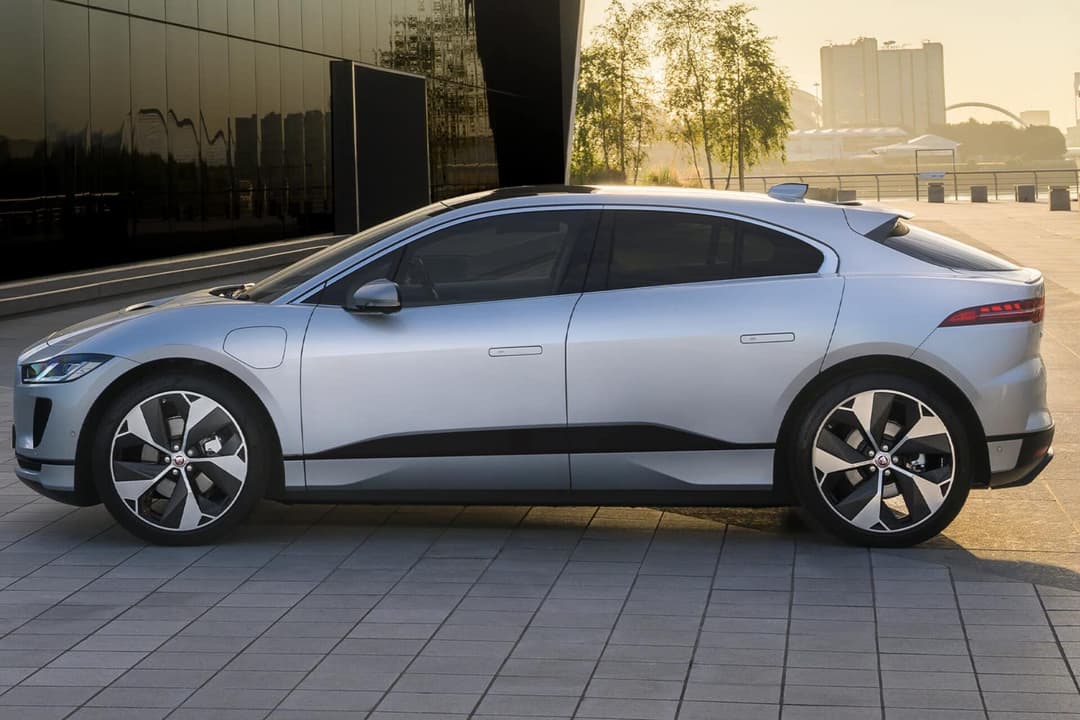
- Compact performance electric SUV
- Competes with: Tesla Model X, BMW iX, Porsche Macan EV
Available in three AWD models, the Jaguar I-Pace has a starting price of $127,620 before on-road costs. The I-Pace is meant to compete with the other performance-oriented EVs such as the Tesla Model X Performance, BMW iX and Porsche Macan EV. It is equipped with a 84k.7kWh (usable) battery pack which allows the I-Pace to have a claimed WLTP driving range of 470km.
The 5-seater I-Pace is capable of being charged with speeds of up to 11kW AC and 100kW DC. It is capable of reaching 0-100 km/h in 4.8s and can reach a top speed of 200 km/h, these are both inferior compared to the closely-priced Tesla Model X but are better compared to another close competitor - then BMW iX xDrive40.
The I-Pace is backed by a five-year, unlimited kilometre vehicle warranty and a eight-year/160,000km battery warranty.
Jeep Avenger
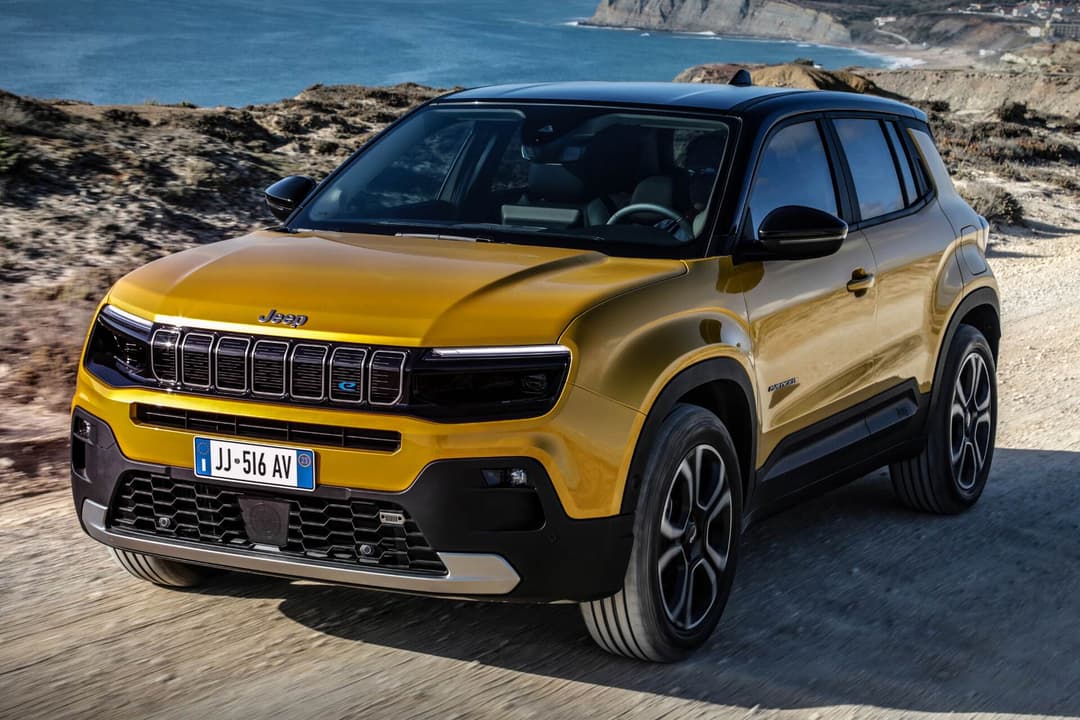
- Small electric SUV
- Competes with: Peugeot e-2008, Volvo EX30, Hyundai Kona
- Expected ion the 2nd half of 2024
The all-electric model of the 2024 Jeep Avenger will be priced starting from around $71,000. It is a bit more expensive compared to its close competitor the Volvo EX30, which is priced around $59,990 for the 2024 model.
No information has been released yet about its driving range but it is expected to feature a FWD automatic drivetrain. It is estimated to have a max output power of 115kW and max torque of 260 Nm, which will enable to Avenger to accelerate from 0-100 km/h within 9.0 seconds.
Kia EV6

- Medium SUV
- Competes with: Tesla Model Y, Hyundai Ioniq 5, Ford Mustang Mach-E
- Available Now
The Kia EV6 is a five-seater electric medium crossover made in South Korea. Priced from $72,590 before on-road costs, it has up to 528km of claimed driving range, one battery pack size, and is available in rear-wheel and all-wheel drive.
The electric car can be charged at up to 10.5kW AC/240kW DC using a Type 2/CCS2 port.
It is offered in three variants featuring a 12.3-inch infotainment display, active safety assistance systems, flush exterior door handles, and more as standard.
The EV6 is covered by a seven-year, unlimited kilometre vehicle warranty and a seven-year/150,000km battery warranty.
➡️MORE: 2022 Kia EV6 GT-Line AWD review
Kia EV9
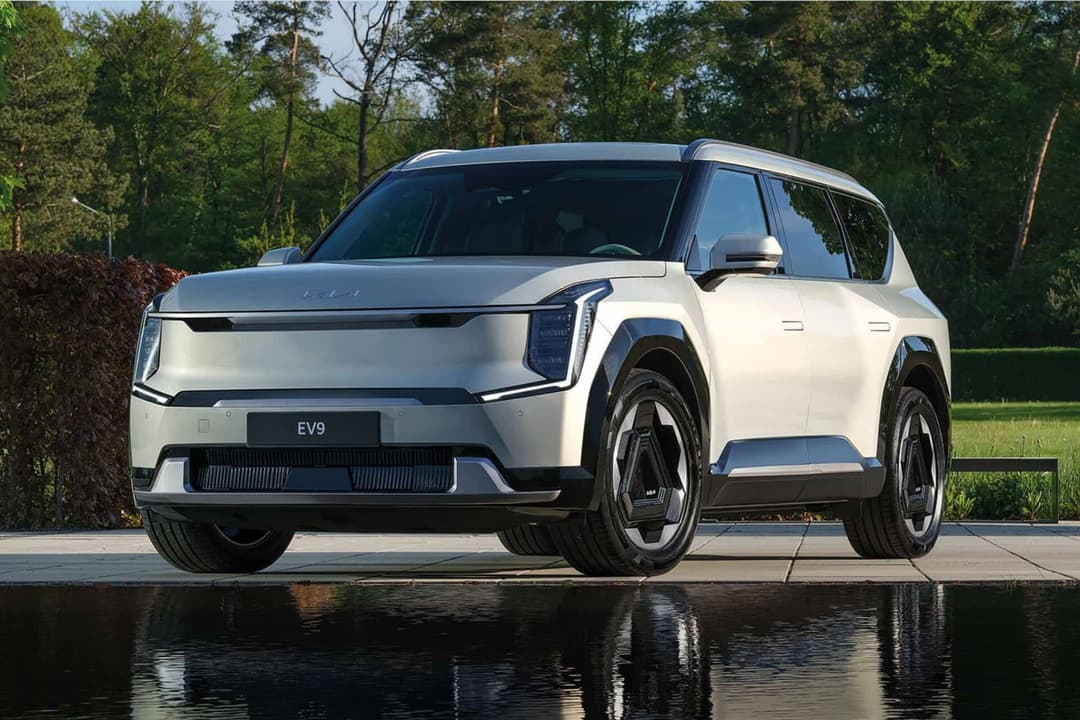
- Medium-sized crossover SUV
- Competes with: Tesla Model X, Mercedes-Benz EQB
The EV9 is Kia's most expensive car sold in Australia to date, but for good reason. In addition to bringing a unique combination of luxury, space, and performance - it will feature a range of technology improvements not seen in previous Kia models.
Prices for the EV9 line-up in Australia stretches from $97,000 to $121,000 before on-roads, with the Earth AWD providing up to 512km of claimed WLTP range – featuring curved dual 12.3-inch displays, level 2 autonomous driving, and an Australian driving tune as standard. For a full breakdown of features for each model refer to the price, models and features section.
The range-topping Kia EV9 GT-Line features dual electric motors producing 283kW of power and 700Nm of torque, and can sprint from 0-100km/h in a spritely 5.3 seconds.
The large electric SUV can charge quickly at up to 10.5kW AC and 240kW DC speeds using an 800-volt class charging architecture, with vehicle-to-load (V2L) capability on all models.
The Kia electric car is backed by a seven-year, unlimited kilometre vehicle warranty and a seven-year/150,000km battery warranty.
➡️MORE: 2024 Kia EV9 price and specs
Kia EV5
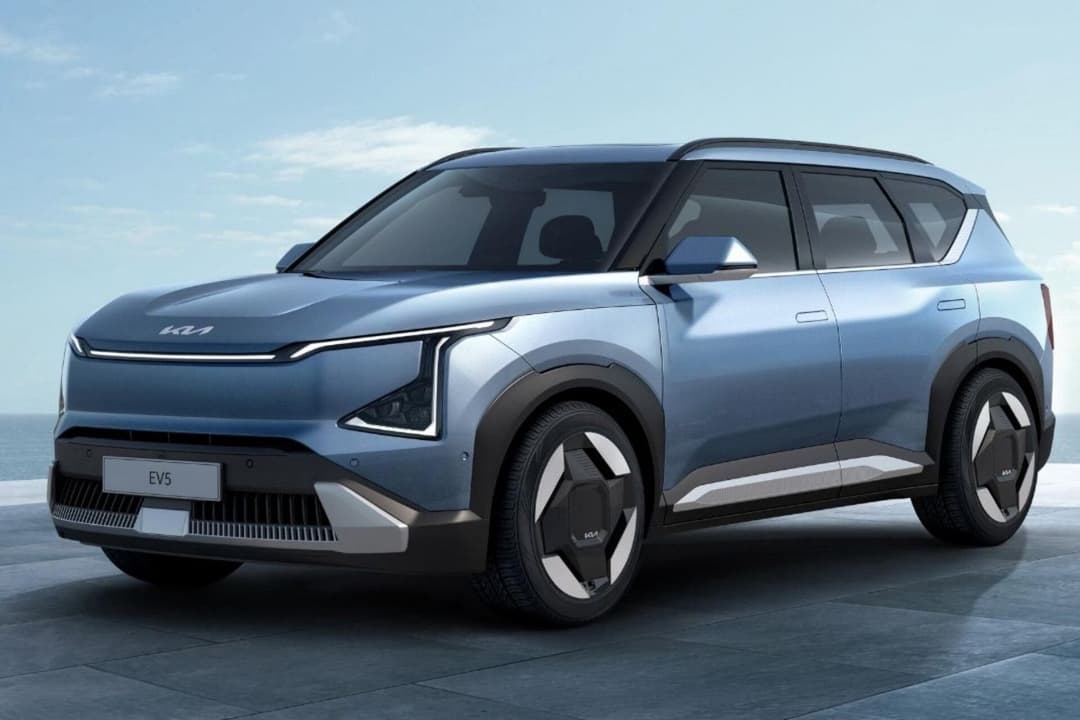
- Medium-sized SUV
- Competes with: Tesla Model Y, Hyundai Ioniq 5, Volkswagen ID.4
- Expected in 2024
The EV5 is built on the same E-GMP all-electric architecture as the EV6 and EV9, as well as Hyundai's Ioniq 5 and Ioniq 6.
Australia market pricing has yet to be released, however, it has been aggressively priced in China, starting at ~A$29,700. This brings it close to the BYD Yuan Plus (Atto 3) pricing of A$26,300 and significantly less than Tesla's Model Y, which starts at a higher A$58,600.
The Standard variant features a 160kW electric front-motor, coupled with a 64kWh battery. Kia states that under the more lenient CLTC testing conditions, it can achieve a range of as much as 530km.
The EV5 also boasts fast-charging capabilities that Kia and Hyundai EVs are known for, allowing a charge from 30 to 80 percent in as little 27 minutes.
Kia Niro EV

- Small SUV
- Competes with: BYD Atto 3, Kia Niro EV
- Available Now
The Kia Niro EV is a five-seater electric small SUV made in South Korea. Priced from $65,300 before on-road costs, it has up to 460km of claimed driving range, one battery pack size, and is front-wheel drive.
The electric car can be charged at up to 11kW AC/84kW DC using a Type 2/CCS2 port.
It is offered in two variants featuring an 8-inch infotainment display, active safety assistance systems, interior vehicle-to-load plug, and more as standard.
The Niro EV is covered by a seven-year, unlimited kilometre vehicle warranty and a seven-year/150,000km battery warranty.
➡️MORE: 2023 Kia Niro EV GT-Line review
Lexus UX 300e
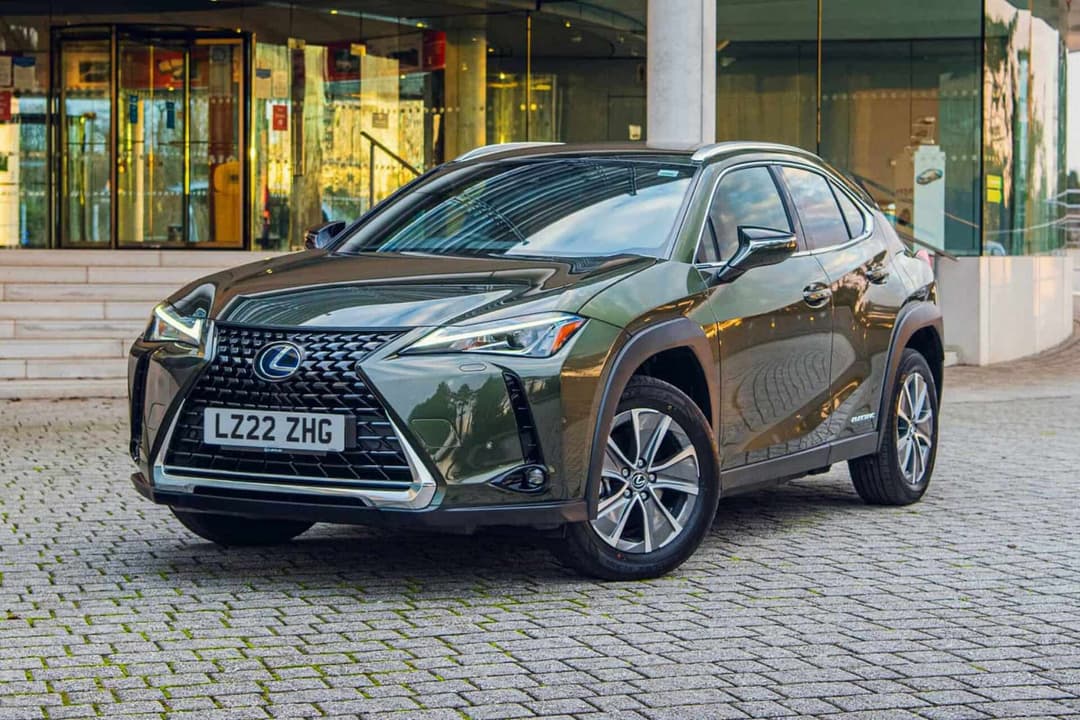
- Luxury compact electric SUV
- Competes with: Hyundai Ioniq 5, Volvo XC40 Recharge, BMW X1
The UX 300e is Lexus' smaller alternative to the Lexus RZ electric SUV as it is meant to compete with other luxury small-sized electric SUVs such as the Volvo XC40 Recharge. It is currently available in only one variant with a price of $74,000 before on-road costs and a claimed WLTP driving range of 315km.
It is equipped with a 45kWh usable battery pack and provides a max output of 150kW. It has a front-wheel drive configuration and which can provide 300Nm of torque and accelerate from 0-100 km/h in 7.5 seconds.
The UX 300e is backed by a five-year, unlimited kilometre vehicle warranty and a ten-year/160,000km battery warranty.
Lexus RZ
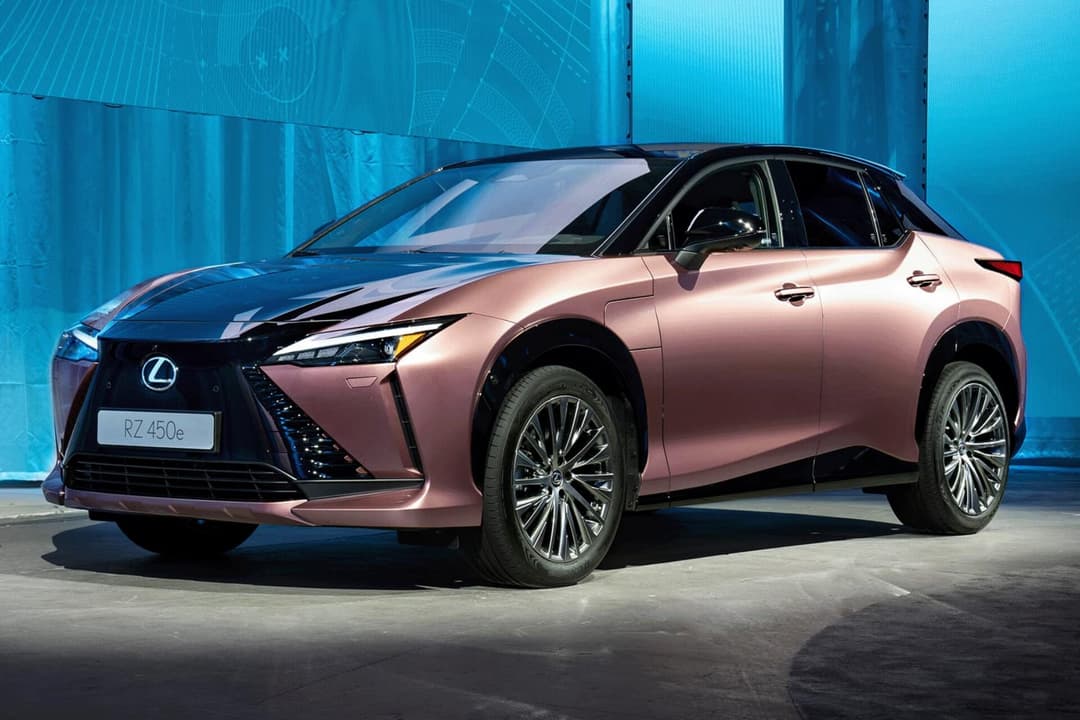
- Luxury electric SUV
- Competes with: BMW iX, Mercedes-Benz EQC, Genesis GV60
The Lexus RZ is the Japanese luxury brand’s first ground-up electric SUV.
Available in two AWD models: the 450e Luxury priced at $123,000 and the more performance-oriented 450e Sports Luxury priced at $135,000 before on-road costs. The RZ EV provides up to 470km of estimated driving range on the lenient NEDC cycle featuring a new spindle grille design, large 14-inch touchscreen, and adopts the dedicated e-TNGA EV platform shared with the Toyota bZ4X and Subaru Soltera SUVs.
The Lexus RZ is equipped with a 64kWh usable battery pack which provides a max power output of 230kW and 169Nm of torque for both models. It is able to accelerate from 0-100 km/h in 5.3 seconds and reach a top speed of 160 km/h.
The Lexus electric SUV comes with a five-year, unlimited kilometre vehicle warranty and a long 10-year, unlimited kilometre battery warranty – provided you service it with Lexus (otherwise it’s five-years only).
Overseas, Lexus claims the battery pack will retain 90 per cent of its health after 10 years of use – but degradation isn’t covered in Australia.
Mercedes-Benz EQA
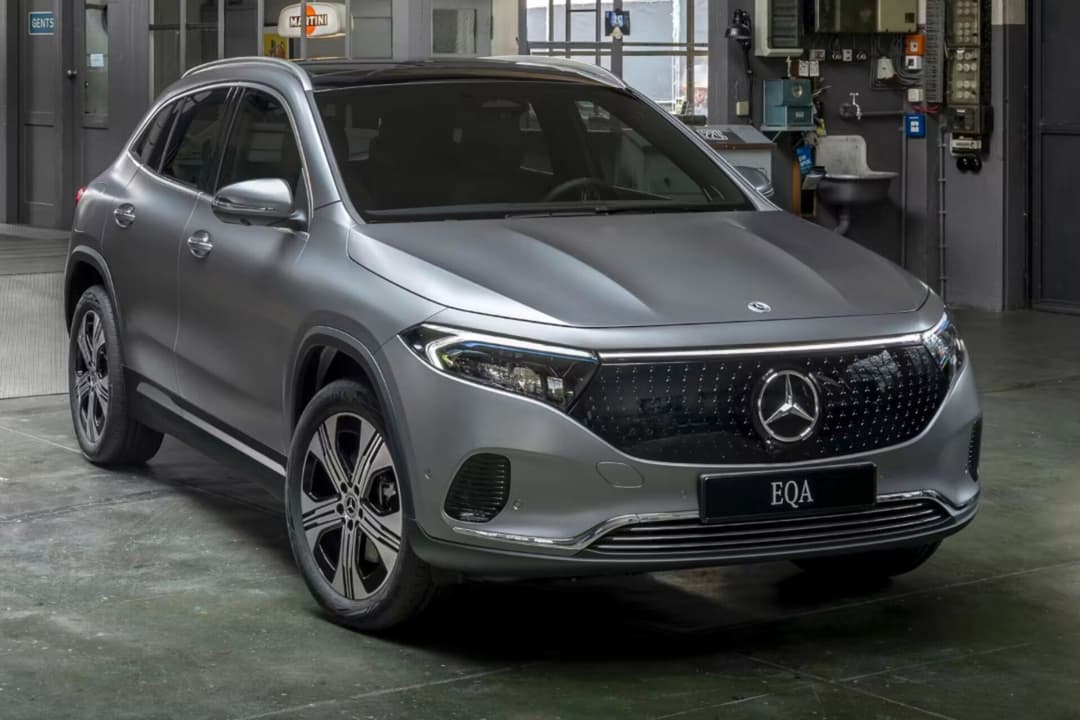
- Compact electric SUV
- Competes with: Volvo XC40 Recharge, BMW iX3, Tesla Model Y RWD
- Expected on the 1st half of 2024
In 2024 the Mercedes-Benz EQA will be receiving a facelift. Priced from $78,513 to $96,900 before on-road costs, the Mercedes-Benz EQA provides between 426km to 430km of claimed WLTP driving range with two models. The Mercedes-Benz EQA has two models for different needs: the budget oriented 250 model and the performance/outdoor enthusiast's 350 4MATIC model.
Mercedes-Benz EQB
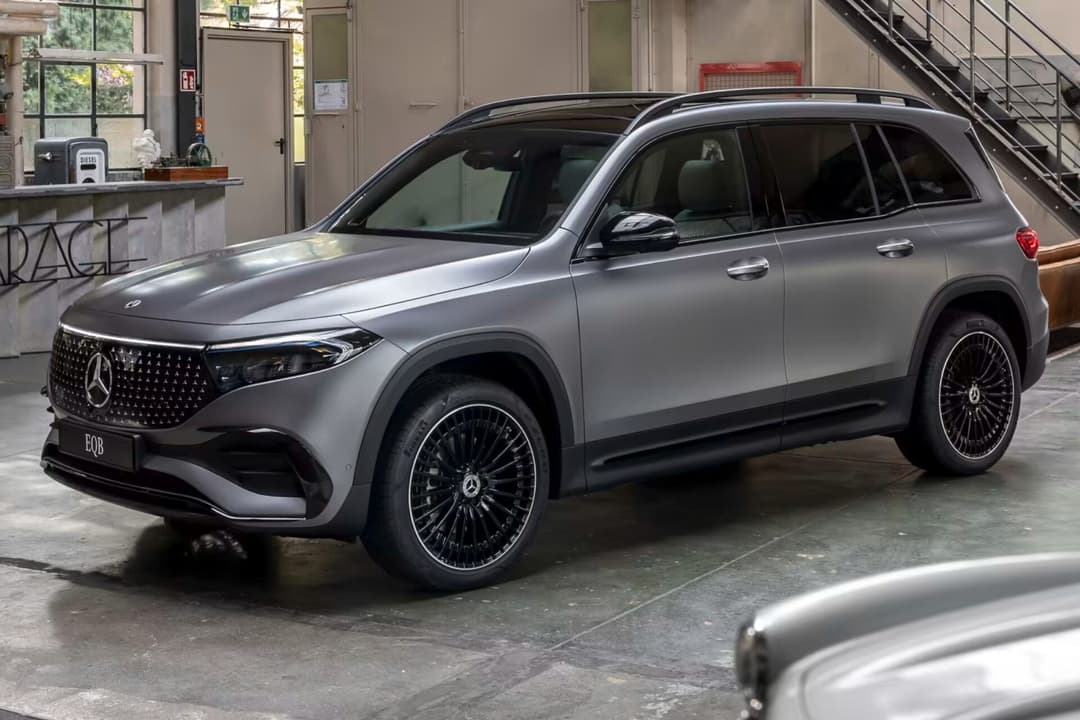
- Compact electric SUV
- Competes with: Tesla Model Y, BMW iX, Hyundai Ioniq 5
- Expected on the 1st half of 2024
Together with the EQA, the Mercedes-Benz EQB will also be receiving a facelift in 2024. With a starting price of A$87,800 the EQB provides between 365-402 km of claimed driving range and a 66.5kWh battery capacity for the base model. The base model's drivetrain will output 168kW/390Nm with the performance-centric 350+ model's outputting 215kW/520Nm.
Mercedes-Benz EQC
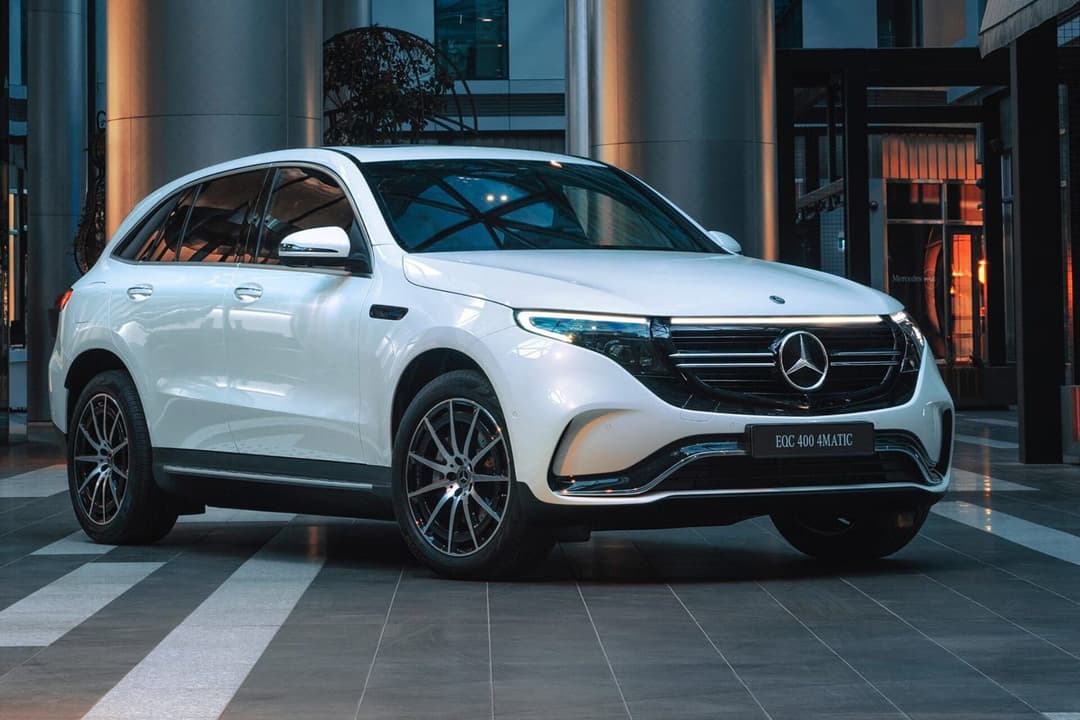
- Luxury compact electric SUV
- Competes with: Tesla Model X, Audi e-Tron, Jaguar I-Pace
The EQC is the performance-oriented offering within the EQ family from Mercedes. It separates itself from its EQA and EQB counterparts with its better performance tuning, making it more fit for highway driving.
Available in two variants: the 400 4Matic priced at $128,000 and the 400 4Matic Sport $145,600. It is equipped 80kWh usable battery pack which allows it to have a WLTP claimed driving range of 411km for the base model. It has charging rates of up to 11kW AC and 110kW DC.
The EQC is equipped with dual electric motors which allows the luxury SUV to have a max output of 300kW and 760 Nm of torque. It is able accelerate from 0-100 km/h in just 5.1 seconds and reach a top speed of 180km/h. Despite being equipped with very powerful motors Mercedes-Benz has built the EQC with driving comfort as priority with features such as heat and noise-inslating acoustic glass.
The EQC electric SUV is backed by a five-year, unlimited kilometre vehicle warranty and a eight-year/160,000km battery warranty.
Mercedes-Benz EQS SUV
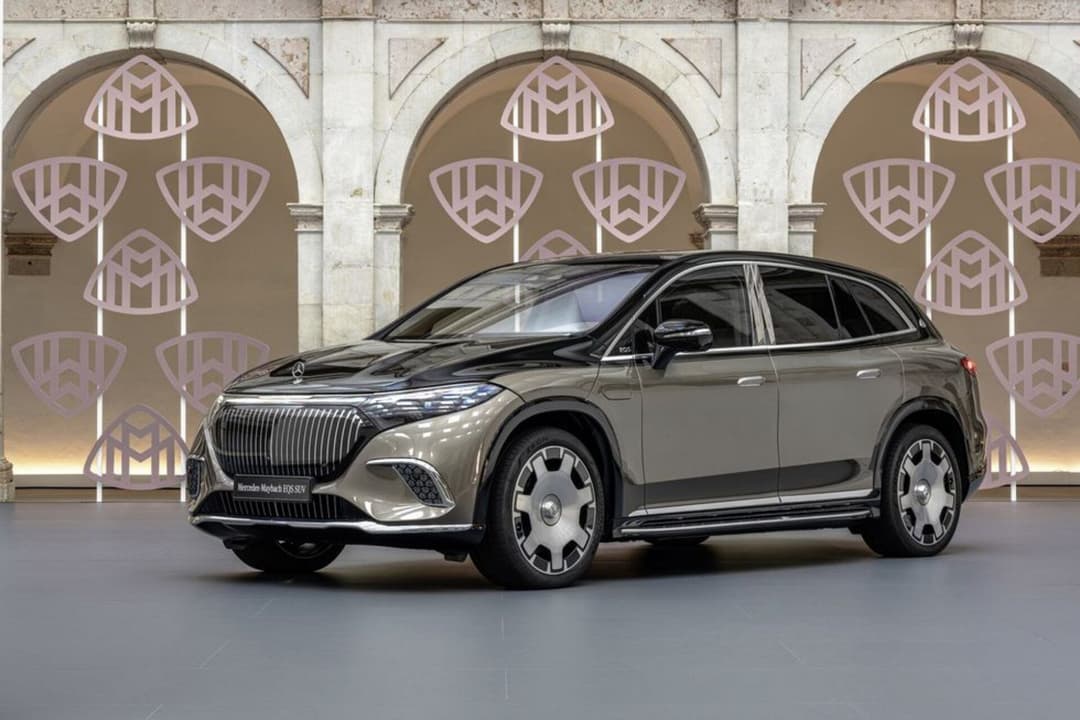
- Large luxury electric SUV
- Expected on the 2nd half of 2024
The EQS SUV is the luxury flagship of the Mercedes-Benz EV range.
Australian pricing and specifications haven't been announced yet, but it's available in four variants overseas with all packing a 108.4kWh usable battery for between 615km to 672km of claimed WLTP range depending on the variant.
Charging speeds mirror the EQS sedan – up to 200kW DC and 11kW AC.
MG ZS EV

- Small SUV
- Competes with: BYD Atto 3, Hyundai Kona EV, Kia Niro EV
- Available Now
The MG ZS EV is a five-seater electric small SUV made in China. Priced from $40,990 before on-road costs, it has up to 440km of claimed driving range, one battery pack size, and is front-wheel drive.
The electric car can be charged at up to 11kW AC/80kW DC using a Type 2/CCS2 port.
It is offered in two variants featuring a 10.1-inch rotating infotainment display, select active safety assistance systems, MG iSmart remote mobile app, and more as standard.
The ZS EV is covered by a seven-year, unlimited kilometre vehicle and battery warranty.
➡️MORE: 2023 MG ZS EV Essence review
Nissan Ariya
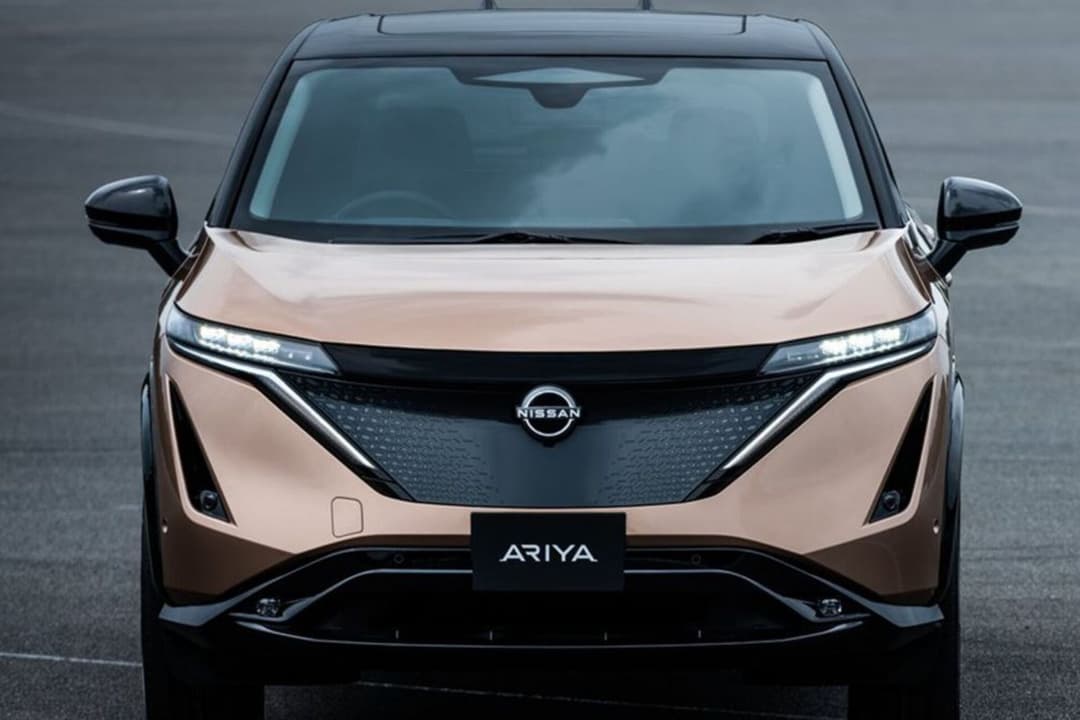
- Electric mid-size SUV
- Competes with: Volkswagen ID.4, Hyundai Ioniq 5, Kia EV6
- Expected in early 2024
Set to replace the Leaf, Nissan will be releasing the Ariya in 2024 which offers improved range and performance for a slight increase in price. It will compete in the popular medium SUV segment which features popular models as the Tesla Model Y, Hyundai Ioniq 5 and Kia EV6. Overseas the Ariya has always been priced very similarly to the Tesla Model Y, it is expected to be the same case once it enters the Australian market. This means that it will probably be priced starting around $65,000-$70,000 locally before on-road costs.
Available in two configurations, front-wheel and all-wheel drive, the Ariya is estimated to have a driving range of up to 490km when opting for the larger battery pack. The front-wheel drive configuration can go form 0-100 km/h in 7.5 seconds while the more powerful all-wheel drive configuration can achieve the same feat in 5.0 seconds.
Renault Megane E-Tech
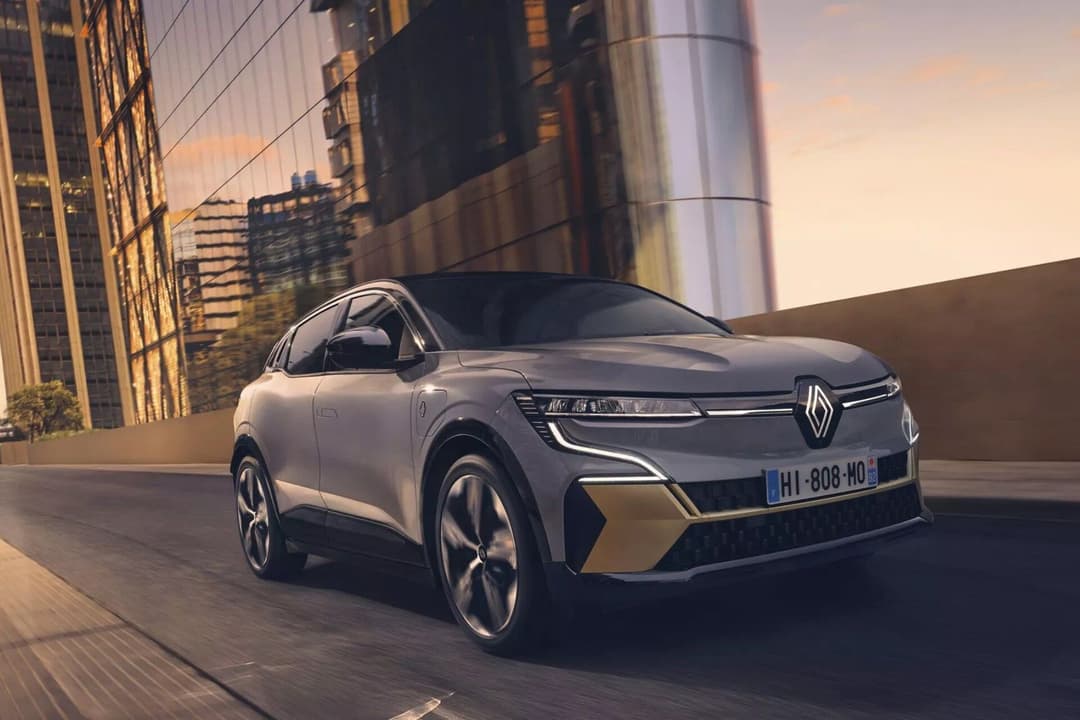
- Small SUV
- Competes with: Kia Niro EV, Peugeot e-2008, Cupra Born
- Expected in Q1 of 2024
The Renault Megane E-Tech will be the French brand's first ground-up EV featuring a new design language and Android Automotive software system.
It's expected to start around the $70,000 range when it lands in Australia, with a 60kWh usable battery providing up to 470km of claimed WLTP driving range.
The small electric SUV is capable of up to 130kW DC and 22kW AC charging rates overseas.
Mini Countryman EV

- Small electric SUV
- Competes with: Volvo XC40
- Expected in Q3 of 2024
In case the Mini Cooper EV is too small for your liking, Mini will also be introducing the Countryman EV in 2024. Similar to the Mini Cooper EV, the Countryman EV will be available in two variants - the base model E and the more powerful SE variant. Pricing details for the Countryman EV have yet to be announced but the base model E is expected to start around $64,000 while the sportier SE model will be around $80,000.
The base model will be equipped with a 64.7kWh battery and has a claimed driving range of 462km. Its 150kW single-motor will allow it to accelerate from 0-100 km/h in 8.6 seconds. The performance-oriented SE model will be equipped with a 230kW twin-motor which will allow it to accelerate from 0-100 km/h in 5.6 seconds while only slightly reducing the driving range to 433km.
Peugeot e-2008
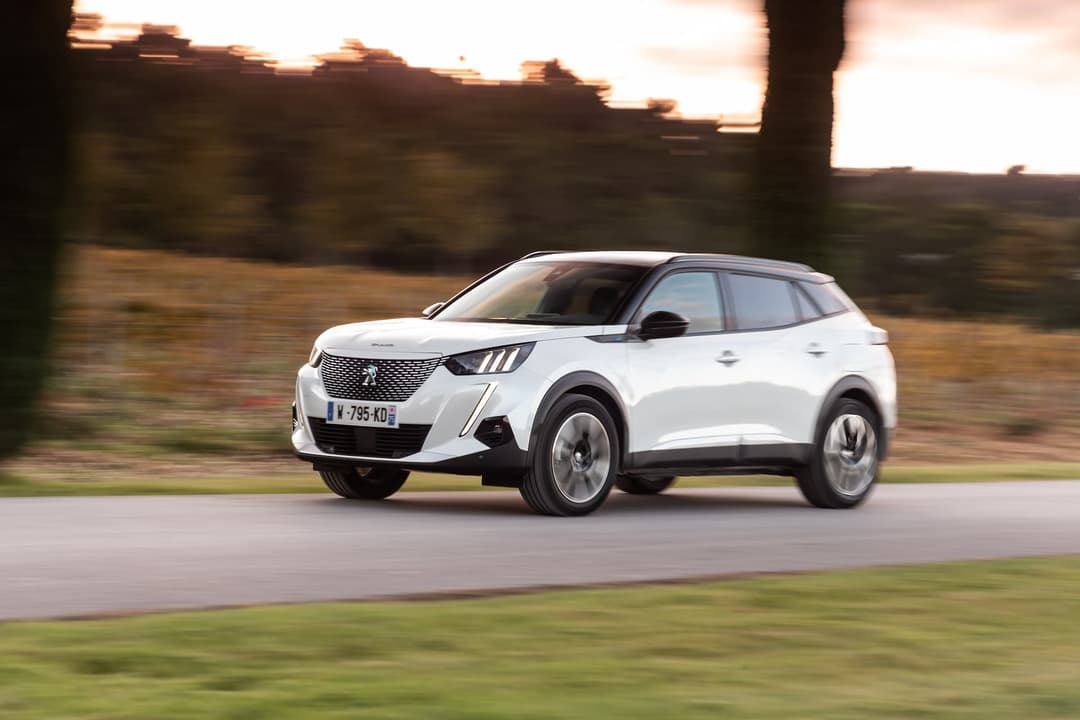
- Small electric SUV
- Competes with: Renault Megane E-Tech, Kia Niro EV, Hyundai Kona Electric, Cupra Born
- Expected in 2024
Peugeot Australia has confirmed it'll bring the pre-facelifted e-2008 electric SUV, as it's second pure EV following the e-Partner commercial van.
Based on the regular petrol-powered mid-spec 2008 GT small SUV, the e-2008 EV is priced from $59,000 before on-roads with a 46.3kWh usable battery pack offering up to 328km of claimed WLTP range.
Recharging rates go up to 100kW DC and 11kW AC.
Polestar 3
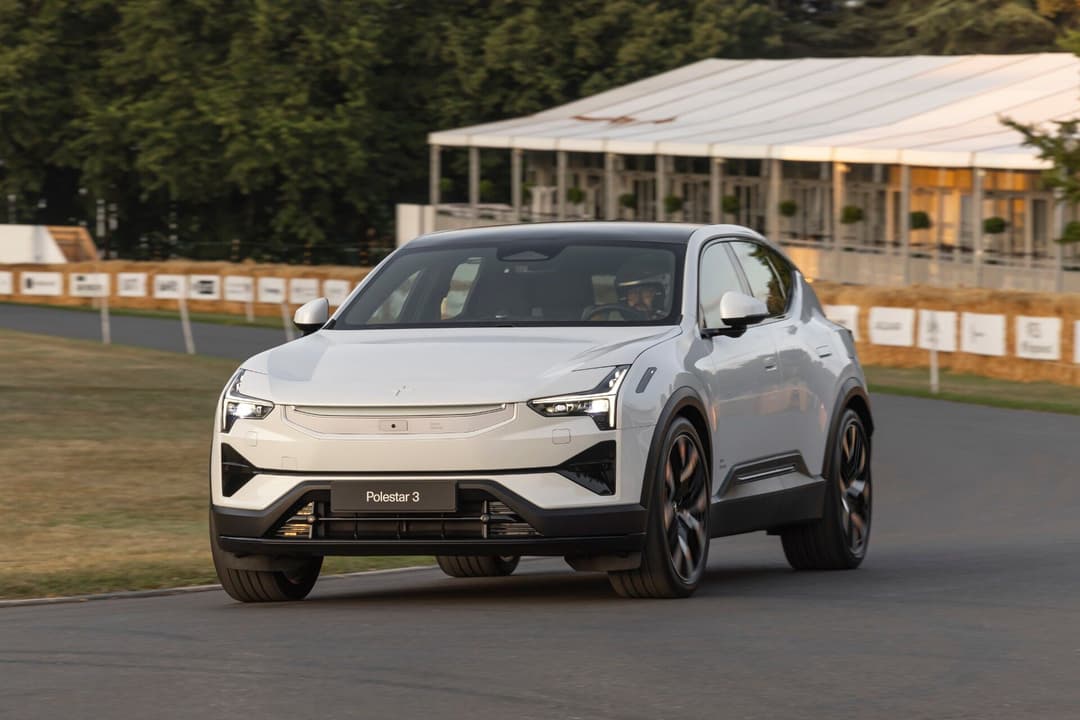
- Luxury crossover SUV
- Competes with: BMW iX, Mercedes-Benz EQS, Genesis GV70
- Expected in mid-2024
The Polestar 3 EV is priced from $132,900 before on-road costs and provides up to 610km of claimed WLTP driving range, featuring Pilot and Plus Packs as standard, a large 14.5-inch Android Automotive touchscreen, and up to 910Nm of torque with the Performance Pack fitted.
The five-seater large SUV can recharge up to 11kW AC and 250kW DC charging speeds via its Type 2/CCS2 port, and has the capability for vehicle-to-grid bidirectional charging.
The Sino-Swedish company promises it can keep at least 70 per cent of its battery health over that period, otherwise battery replacement can be offered for free.
Polestar 4
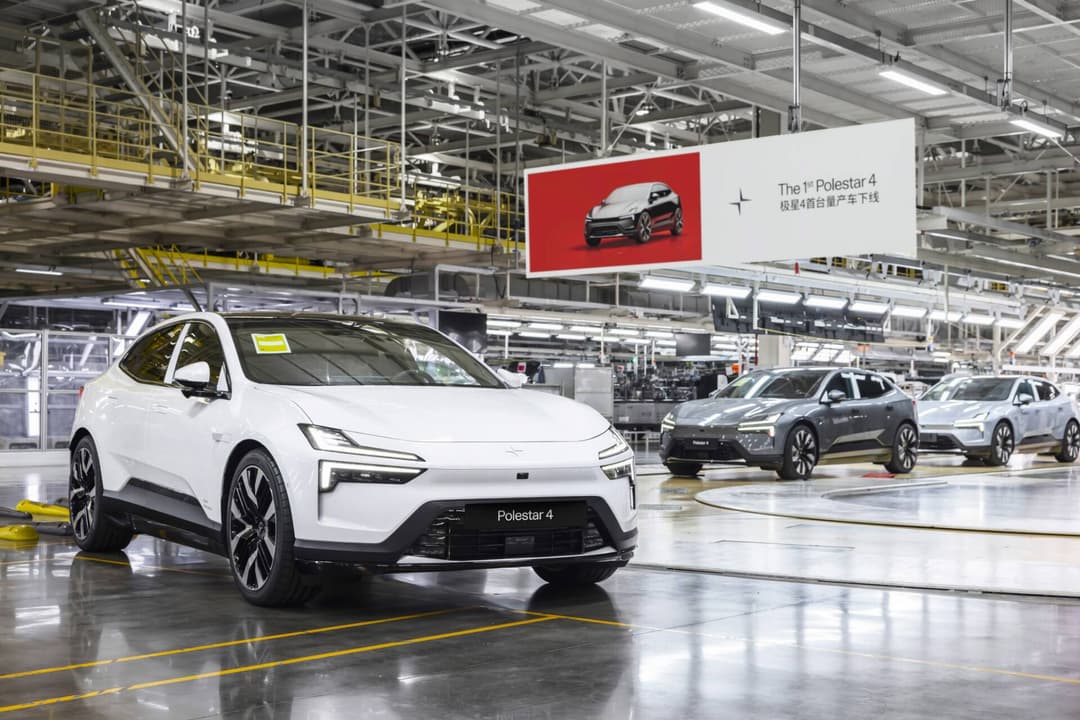
- Compact luxury crossover SUV
- Competes with: Kia EV6, Tesla Model Y
- Expected in Q3 of 2024
The Polestar 4 falls between the Polestar 2 and 3 in price and size but it surpasses both in performance. With a starting price of about $90,000 it competes with EV's such as the Tesla Model Y and Kia EV6.
The Polestar 4 will be equipped with a 102kWh battery pack and will be available in two configurations - single and dual electric motor options. The dual motor version will be Polestar's most powerful and fastest vehicle to date. With a max output of 394 kW and a 0-100 km/h acceleration of 3.8 seconds. On the other hand, the Long Range version in single motor is expected to reach a driving range of 480 km. The Polestar 4 will also offer fast DC charging capabilities of up to 200 kW while AC charging is at 22 kW.
Porsche Macan EV
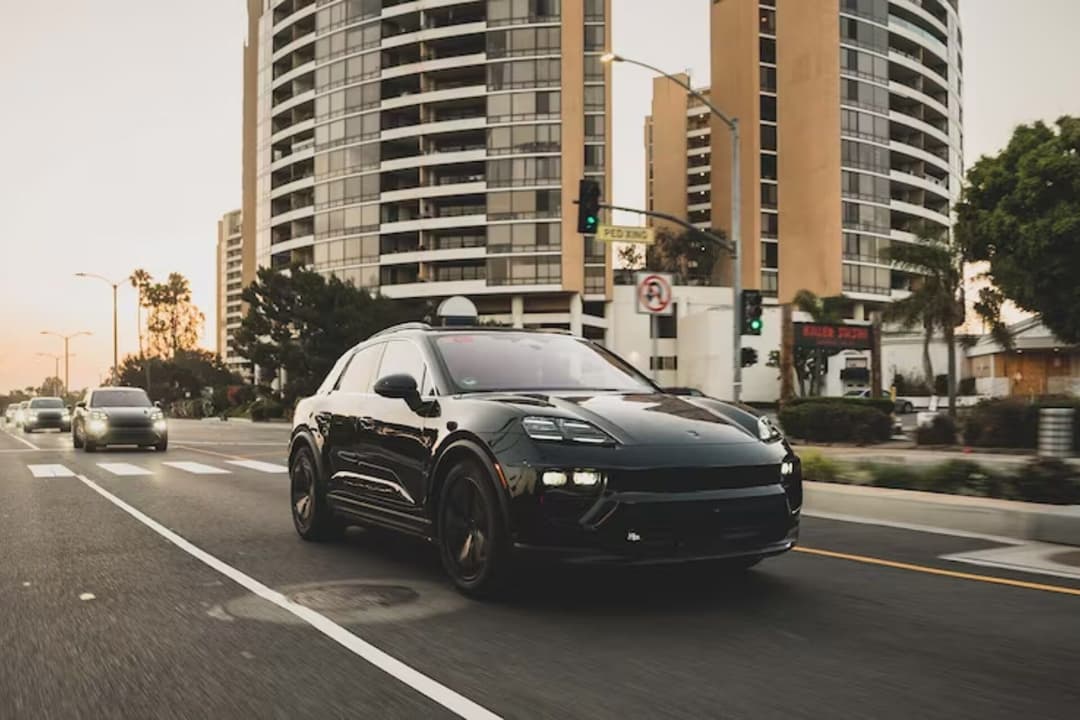
- Compact luxury crossover SUV
- Competes with: Tesla Model Y, Audi e-Tron, Polestar 4
- Expected in 2024
Prototypes of the Porsche Macan EV have recently been spotted undergoing testing in California. It is set to be unveiled in late 2023 and is expected to be available in Australian shores by 2024. Pricing details for the Macan EV have yet to be revealed but the non-EV models of the Macan are currently priced at A$93,800.
Porsche has hinted that the Macan EV will improve upon the driving range of the Taycan , which means a driving range of 400-500 km for the Macan EV. The Macan will be Porsche's first ever model to be built on an EV-dedicated platform with an all-wheel drive powertrain. It has been confirmed that the Macan will be equipped with lithium-ion battery pack with around 100 kWh of capacity, and an electric motor with a max output of 450 kW and 1000 Nm of torque. The Macan is also expected to have fast DC charging capabilities of up to 270 kW which allows it to charge from 5-80% in 25 minutes.
Skoda Enyaq
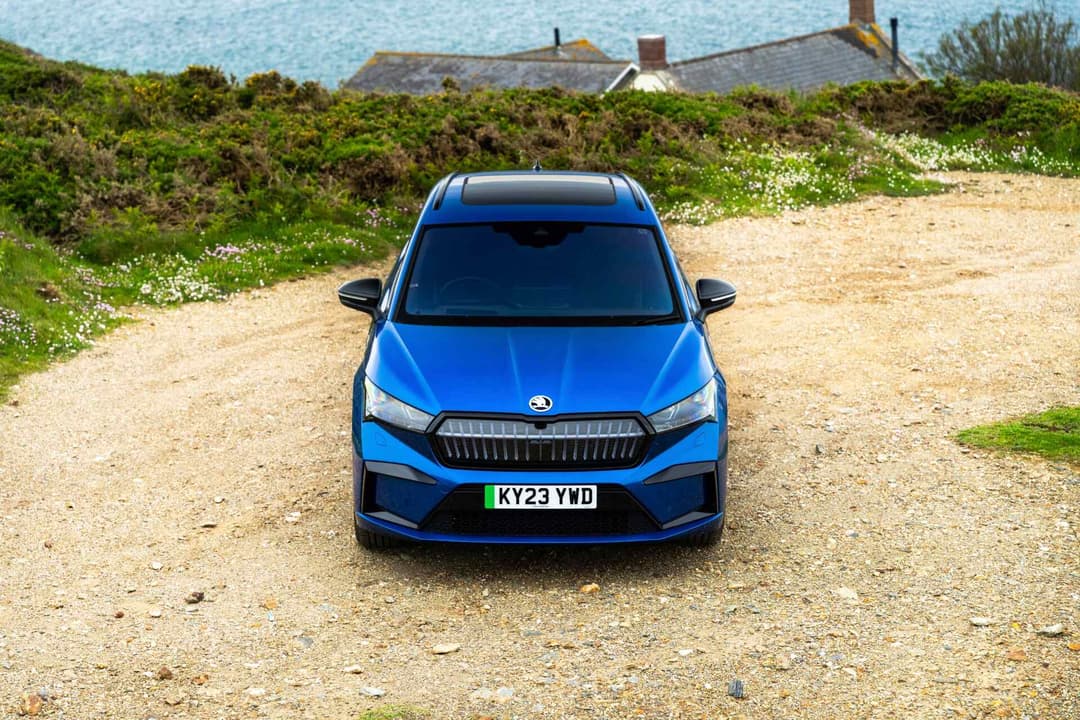
- Mid-size electric SUV
- Competes with: Cupra Born, BYD Atto 3, Volkwagen ID.4
- Expected in July 2024
The Skoda Enyaq will be available in four different models which offer various choices for range, performance and price. The Enyaq's base model, the 60, has a starting price overseas of £38,970 (~A$75,000) and offers up to 400 km in driving range. On the other hand the 85 model of the Enyaq, offers the best driving range at 565km with a cost of £44,540 (A$85,000). For more performance-centric buyers, the vRS model has a max power output of 250kW.
The base model has a DC charging capacity of 120 kW while the more expensive and performance-centric models have a DC charging capacity of 175 kW DC.
SsangYong Torres EVX
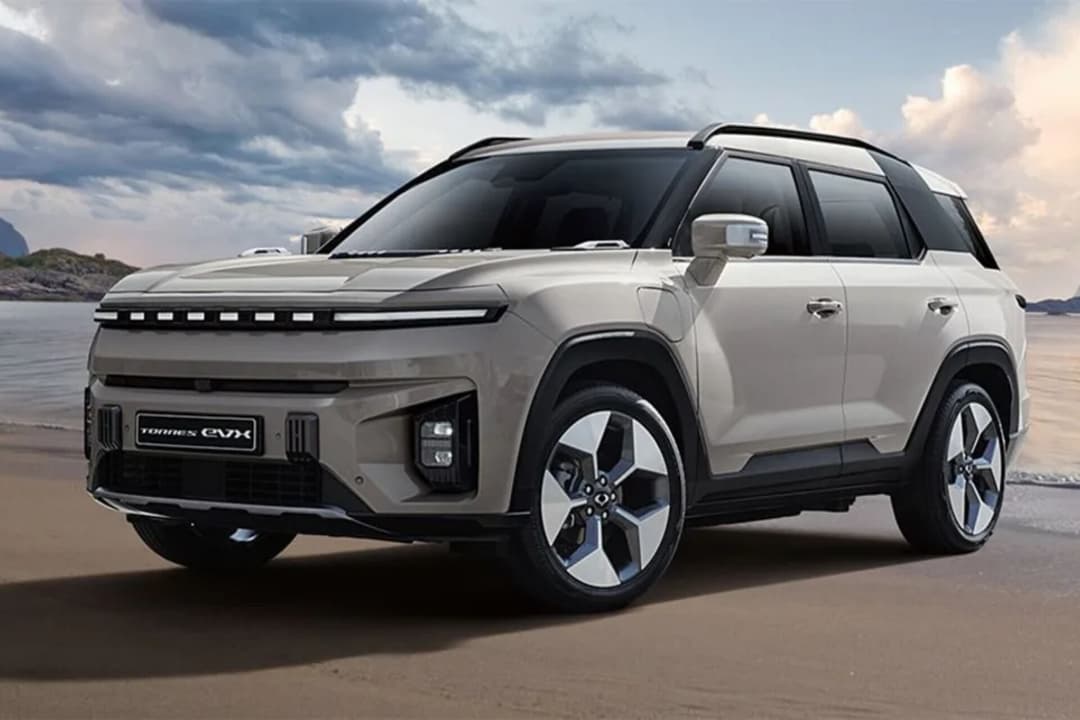
- Electric SUV
- Competes with: Hyundai Kona, Kia Niro, MG ZS EV
- Expected on the 2nd half of 2024
Recently renamed to KG Mobility, this South Korean car manufacturer unveiled its new Torres EVX. It is still unclear whether the all-electric version will be introduced to the Australian market in 2024, but based on its pricing in South Korea it is estimated to cost around A$55,000-60,0000 for Australians. The Torres EVX's starting price falls between the prices of its closest competitors, being priced higher than the Hyundai Kona but less than the Kia Niro base models.
The Torres EVX will be equipped with a 73.4kWh LFP battery pack which will provide the SUV with a driving range of 433km. It has a front-wheel drive configuration powered by a 152kW electric motor. The Torres EVX comes with loads of features such as Apple Play/Android and V2L charging capabilities.
Tesla Model Y

- Medium SUV
- Competes with: Hyundai Ioniq 5, Kia EV6, Ford Mustang Mach-E
- Available Now
The Tesla Model Y, the best selling EV in Australia, is a five-seater electric medium crossover made in China. Priced from $69,300 before on-road costs, it has up to 533 km of claimed driving range, two battery pack sizes, and is available in rear-wheel and all-wheel drive.
The electric car can be charged at up to 11kW AC/250kW DC (depending on the variant) using a Type 2/CCS2 port.
It is offered in two variants featuring a 15-inch infotainment display, active safety assistance systems, built-in dashcam recording, and more as standard.
The Model Y is covered by a four-year/80,000km vehicle warranty and a eight-year/160,000km or eight-year/192,000km battery warranty (depending on the variant).
A possible mid-life update known as 'Project Juniper' could happen in 2024.
Toyota bZ4x
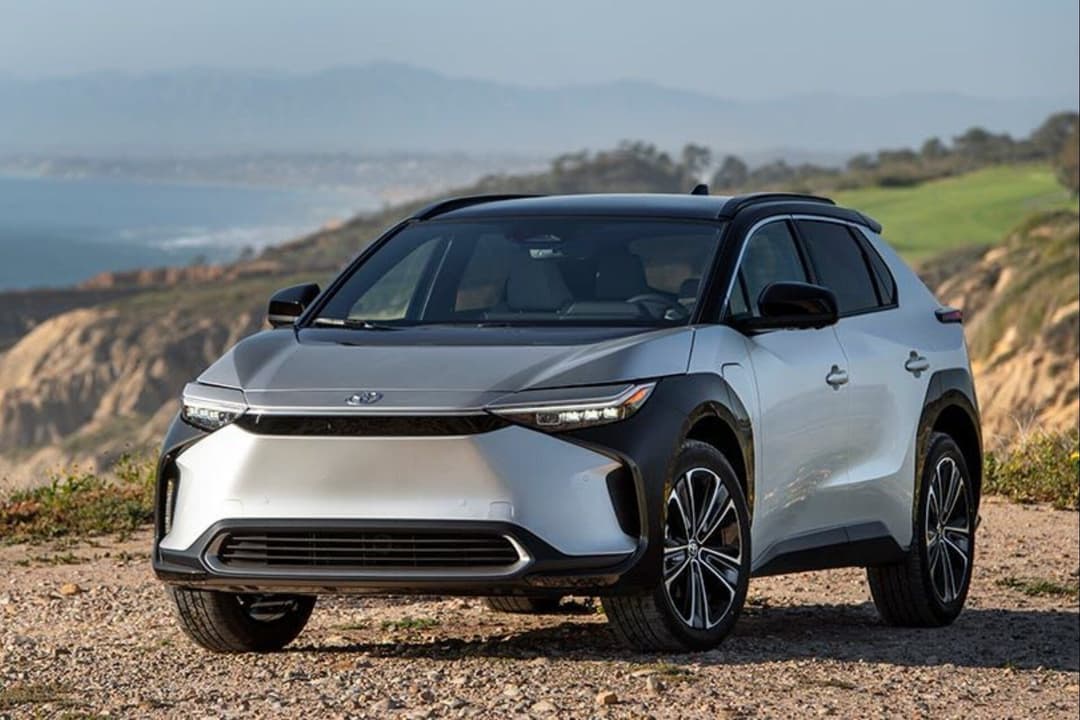
- Medium electric SUV
- Competes with: Tesla Model Y, Kia EV6, Hyundai Ioniq 5, Volkswagen ID.4, Subaru Solterra
- Expected on the 1st half of 2024
Australia's most popular car brand will launch its first EV at the start of 2024. The Toyota bZ4x is an all-electric equivalent of its popular petrol-powered RAV4 medium SUV, though the local arm expects low volume sales.
Riding on a ground-up EV platform, it adopts a 64kWh usable battery pack for between 470km to 516km of claimed WLTP range depending on the variant.
The Toyota electric car can be recharged at up to 150kW DC and 6.6kW AC speeds.
Volkswagen ID.4
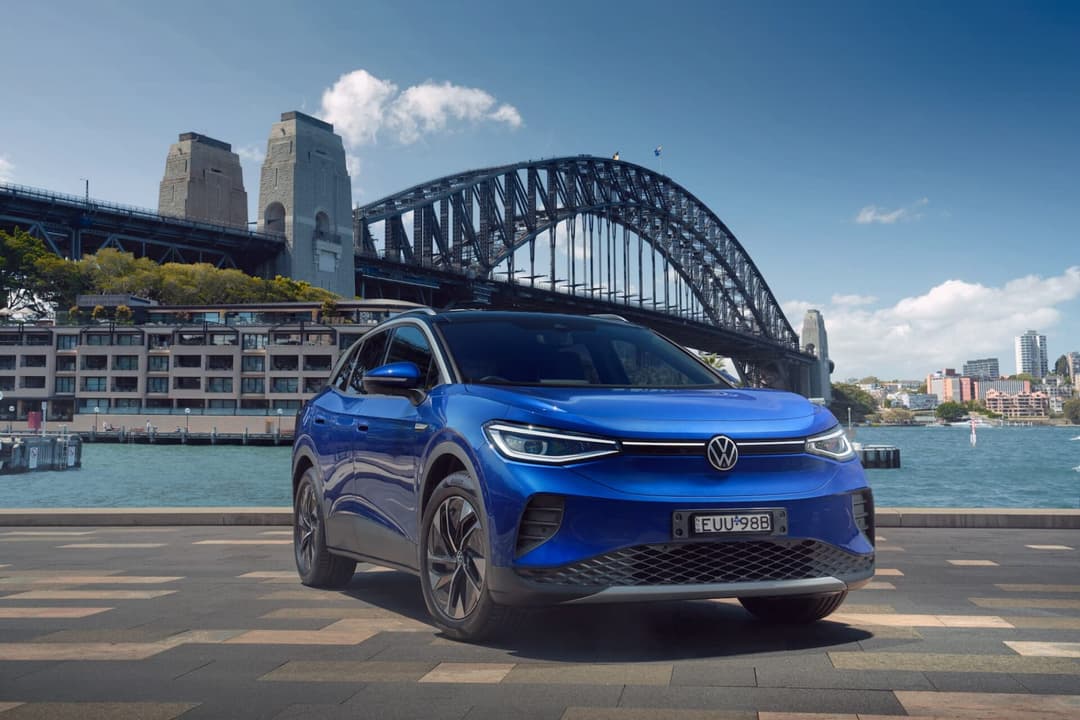
- Medium electric SUV
- Competes with: Tesla Model Y, Kia EV6, Hyundai Ioniq 5, Toyota bZ4X
- Expected in July 2024
The German automotive giant is set to finally debut its first electric cars in Australia – almost four years after its release overseas.
The Volkswagen ID.4 is a family electric SUV targeted at the popular Tesla Model Y, with an entry price of around $60,000 expected.
It will be sold in two different useable battery sizes – 52kWh and 77kWh, offering up to 345km and 522km of claimed WLTP driving range repsectively.
Charging speeds differ from 110kW DC and 7.2kW AC on the smaller battery or 125kW DC and 11kW AC on the larger unit.
Volkswagen ID.5
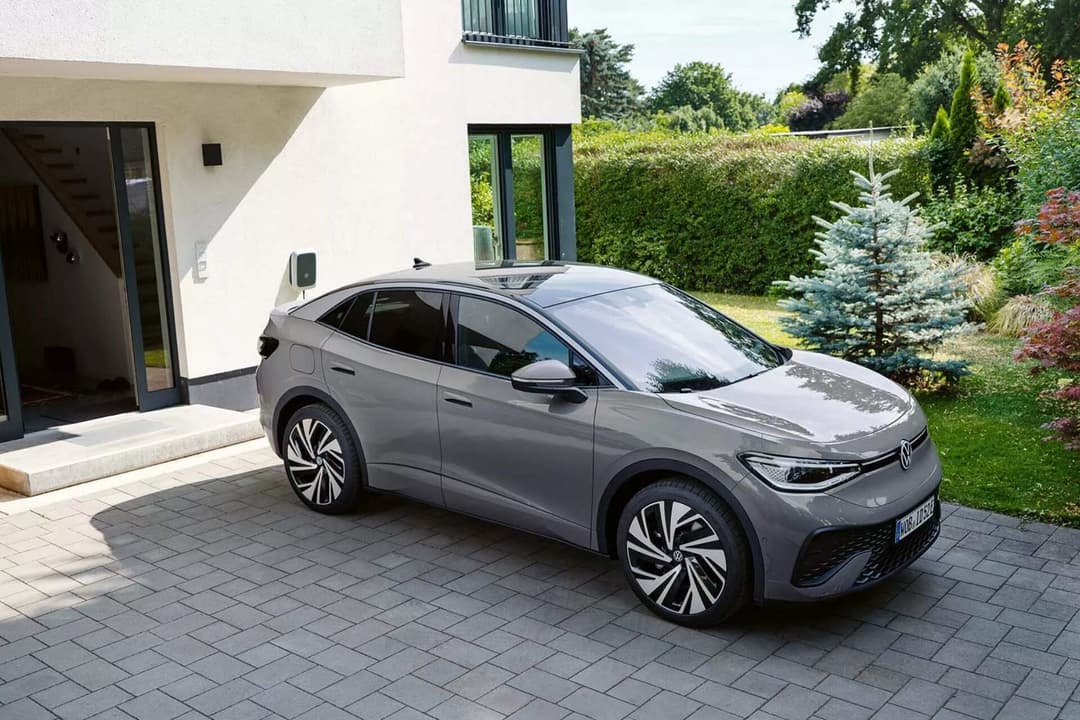
- Medium electric coupe SUV
- Competes with: Kia EV6, Renault Megane E-Tech, Volvo C40 Recharge
- Expected in July 2024
Also set to debut in Australia alongside the Volkswagen ID.4 is the ID.5, a low-slung 'coupe SUV' version.
While local pricing and specifications haven't been announced yet, it's possible that the line-up will mirror the ID.4 SUV, albeit with a slightly higher price tag.
Volvo XC40 Recharge

- Small electric SUV
- Competes with: Tesla Model Y, Mercedes-Benz EQA, Kia Niro EV
- Expected in early 2024
The Volvo XC40 Recharge is a five-seater electric small SUV made in China. Priced from $72,990 before on-road costs, it has up to 425km of claimed driving range, two battery pack sizes, and is available in front-wheel and all-wheel drive.
The electric car can be charged at up to 11kW AC/150kW DC (depending on the variant) using a Type 2/CCS2 port.
It is offered in two variants featuring a 9-inch infotainment display, active safety assistance systems, heat pump, and more as standard.
The XC40 Recharge is covered by a five-year, unlimited kilometre vehicle warranty and an eight-year battery warranty.
Volvo C40 Recharge
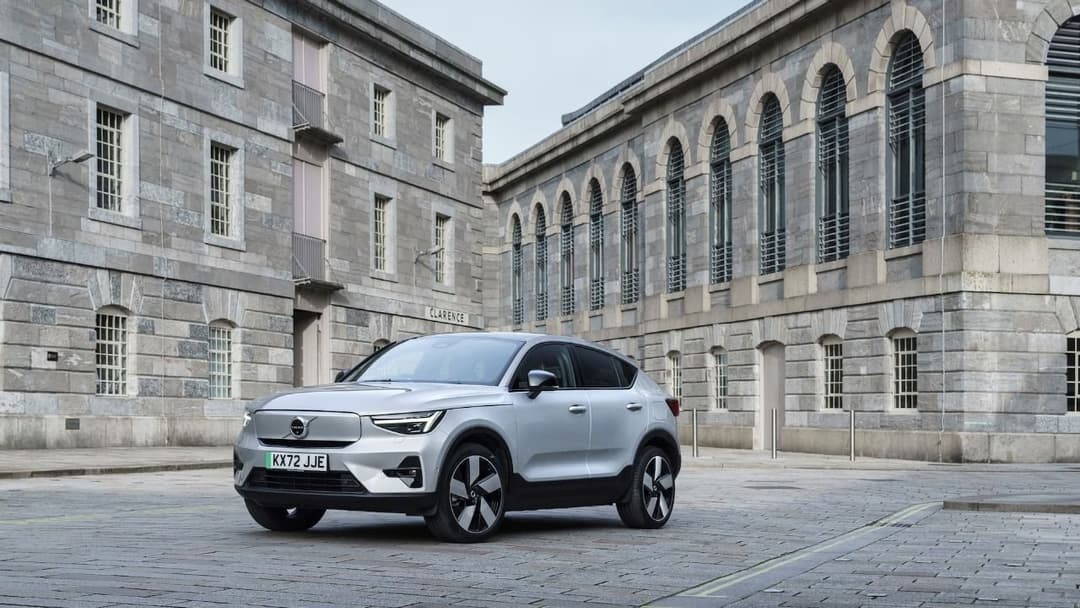
- Small electric coupe SUV
- Competes with: Polestar 4, Volkswagen ID.5
- Expected in early 2024
The Volvo C40 Recharge is a five-seater electric coupe SUV made in China. Priced from $76,990 before on-road costs, it has up to 507km of claimed driving range, two battery pack sizes, and is available in front-wheel and all-wheel drive.
The electric car can be charged at up to 11kW AC/200kW DC (depending on the variant) using a Type 2/CCS2 port.
It is offered in two variants featuring a 9-inch infotainment display, active safety assistance systems, heat pump, and more as standard.
The C40 Recharge is covered by a five-year, unlimited kilometre vehicle warranty and an eight-year battery warranty.
Volvo EX30
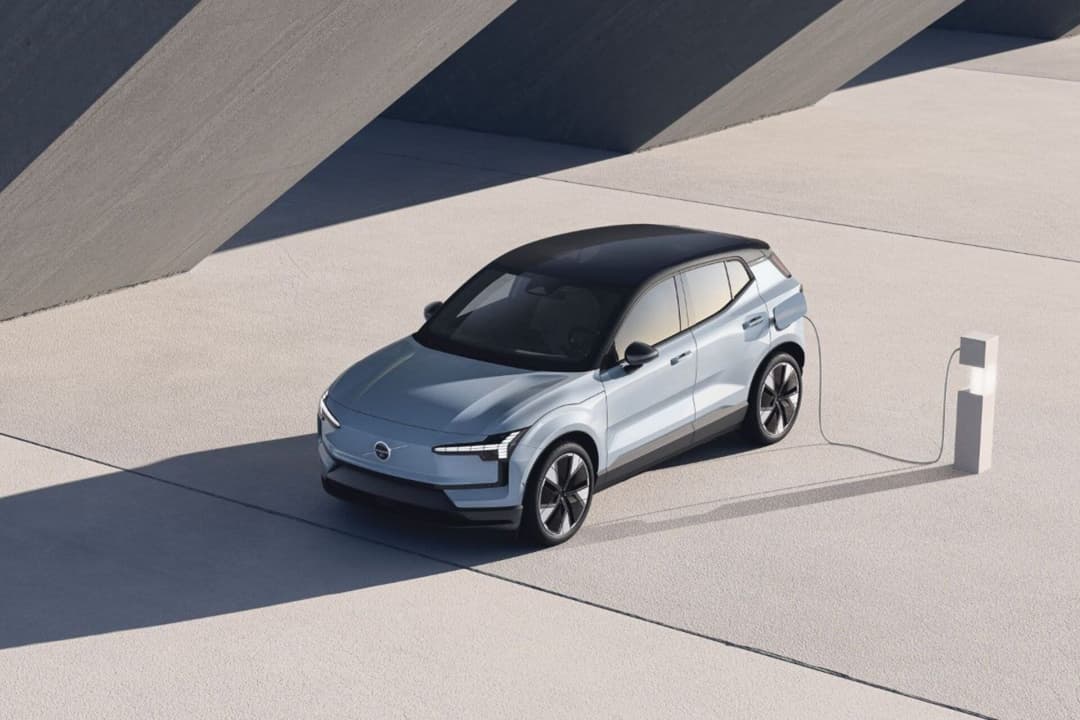
- Small electric SUV
- Competes with: Tesla Model Y, Mercedes-Benz EQA, Kia Niro EV
- Expected in early 2024
The premium small electric SUV is a compelling package offering value, an eco-conscience, and high performance. Priced from $59,990 to $69,990 before on-road costs, the EX30 EV provides between 460km to 480km of claimed WLTP driving range depending on the variant.
The Performance model can go from 0-100km/h time in just 3.6 seconds – in line with the Tesla Model Y Performance, Kia EV6 GT, and Ford Mustang Mach-E GT.
The Volvo EX30 rivals the similarly-priced Tesla Model 3, Cupra Born, and Polestar 2 electric cars. But, electric SUV competitors include the upcoming all-new Hyundai Kona Electric, Kia Niro EV, and larger Tesla Model Y.
Volvo EX90
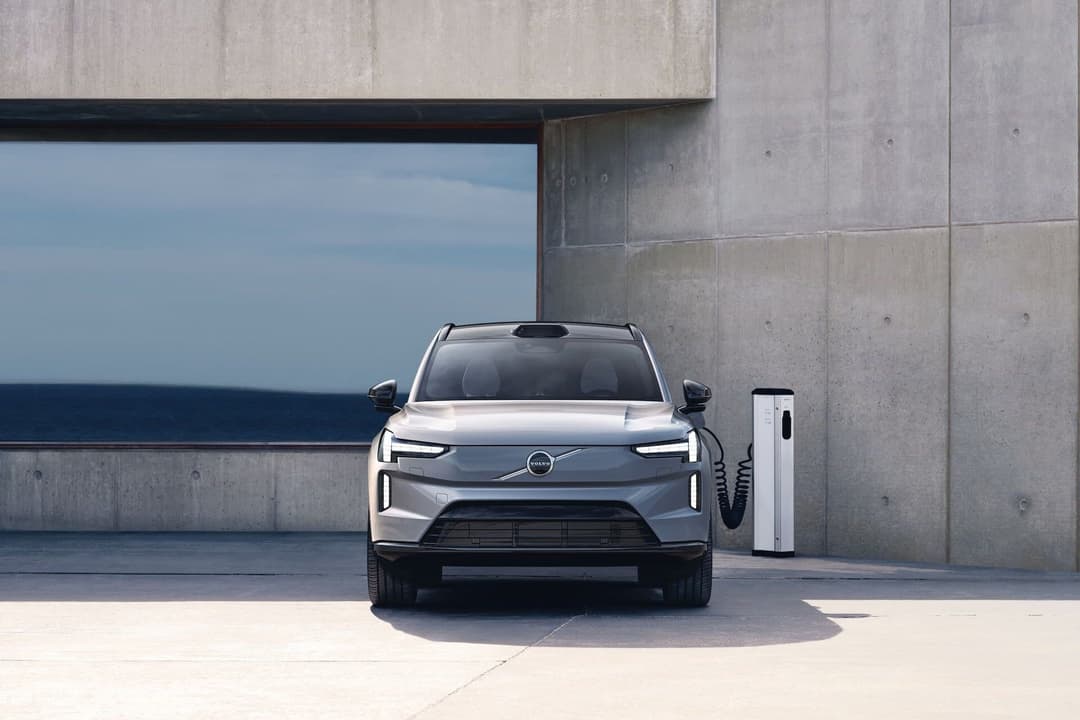
- Large electric SUV
- Competes with: BMW iX, Mercedes EQS SUV, Tesla Model X
- Expected in late 2024
The Volvo EX90 is set to compete with similar large electric SUVs such as the BMX iX and Tesla Model X, once it is introduced in 2024. It will act as the larger, tech-filled and higher-end version of the EX30. It is estimated to cost Australians around $120,000 for the base model and reach the $150,000-figure for more expensive variants with additional features.
It will be equipped with a 111kWh battery pack which will provide the EX90 with up to 480 km of driving range. The EX90 will be built with a twin-motor AWD configuration, giving it 365 kW of power and 900 Nm of torque. On the other hand, the base model will have 295kW of power and 770 Nm of torque.
A defining feature for the EX90 would be its safety technology. Volvo went all-in when it comes to the safety features for the EX90 as they have equipped the EX90 with their best and most advanced sensors and software.
Stay up to date with the latest EV news
- Get the latest news and update
- New EV model releases
- Get money savings-deal
